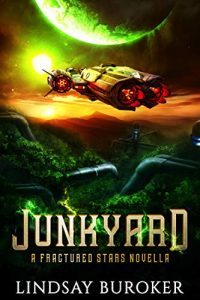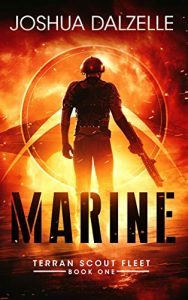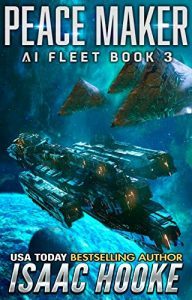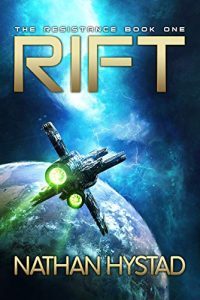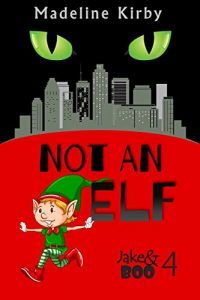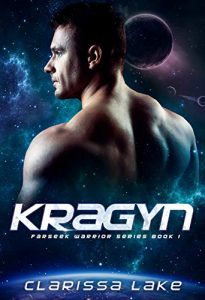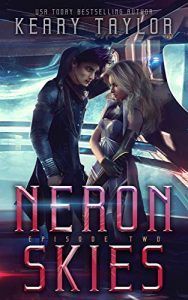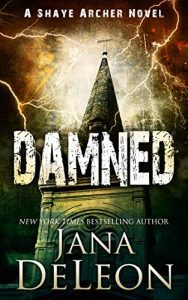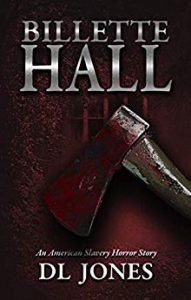Cora Buhlert's Blog, page 75
February 8, 2019
Star Trek Discovery pays “An Obol to Charon” and gets back on form
After last week’s messy return to much of what made season 1 so annoying, Star Trek Discovery comes roaring back with “An Obol to Charon”. For my take on previous Star Trek Discovery episodes, go here.
“An Obol to Charon” features yet another reiteration of two classic Star Trek tropes, namely the encounter with a threatening cosmic phenomenon (or is it?) and “everything on the entire ship is breaking down and the crew must make do without tech”. However, though the basic tropes are well worn, “An Obol to Charon” manages to do something original with them and also uses them to develop and illuminate the relationships between the characters.
Warning! Spoilers behind the cut!
The episode opens with the Discovery still hunting for Spock, who is on the run after breaking out of a mental hospital and killing three doctors in the process – or so Starfleet claims. Number One, Pike’s first officer aboard the Enterprise (who is now played by Rebecca Romijn, but still hasn’t acquired an actual name), shows up to give Pike an update about Spock and his last known whereabouts in exchange for a cheeseburger. The Discovery immediately sets off in pursuit, but instead of Spock (whom I suspect we won’t see until the season finale, given the pace at which the search for him is progressing), the Discovery finds – surprise – a mysterious cosmic phenomenon (TM). Though this mysterious cosmic phenomenon (TM) is not the Red Angel whom the Discovery has been chasing these past few episodes, but a gigantic glowing orb, which pulls the Discovery out of warp speed and then infects the ship with a virus that causes every single system on board to break down.
Now massive shipwide system failures are nothing new for Star Trek – Starfleet vessels seem to experience them about as often as they encounter mysterious cosmic phenomena (TM) with holodecks particularly prone to malfunctioning. What sets this massive shipwide failure apart from others we’ve seen during 53 years of Star Trek history, is that the virus transmitted by the glowing orb mainly attacks the Discovery‘s communication system. First of all, the automatic doors get jammed, trapping Starfleet personnel in their respective sections of the ship. Then, the universal translator goes completely haywire and starts translating everybody’s words into random languages, making communication impossible and linguists’ hearts leap with joy. By the way, the implication that the Discovery crew (and presumably every other Starfleet crew we’ve ever seen) are really speaking a multitude of languages and we only hear them speaking in English (or German or whatever), because that’s what the universal translator spits out for us, is certainly interesting.
Since the Federation has universal translators, language learning isn’t really a priority for Starfleet personnel. And hence they rely on the universal translator so completely that they are utterly lost without it. But luckily, one Discovery crewmember has made language learning a priority and that’s Saru who speaks 94 languages and is pretty much the only one on board who is able to translate the dialogues between the various crewmembers.
Unfortunately, Saru isn’t feeling well. Initially, he believes he caught a cold from the sniffling alien crewmember (apparently the character’s name is Linus and his species has six sinuses) last seen in the first episode of season 2. But it quickly turns out that Saru has caught something much worse and is actually dying.
Here “An Obol for Charon” not just lives up to its title, which is a reference to the coin with which you pay Charon the ferryman when he takes you across the river Styx into the Greek underworld, it also hearkens back to a Saru focussed Short Treks mini-episode named “The Brightest Star”. Now I haven’t seen the Short Treks mini-episodes, because they are not easy to watch outside the US. But apparently “The Brightest Star” delves a bit into the biology of Saru’s species, the Kelpians. We’ve been told before that Kelpians are considered livestock, basically alien cows or pigs, and are farmed by an advanced alien race called the Ba’ul. When a Kelpian approaches the end of their life, they exhibit symptoms similar to Saru’s. Then they are either harvested – and presumably eaten (and honestly, what is it with this weird “Let’s eat Saru” obsession in Star Trek Discovery?) – by the Ba’ul or they go inevitably mad.
However, there are no Ba’ul handy to harvest Saru and the only other Kelpian eater we know of, the evil mirror universe Philippa Georgiou, is too busy strutting around her Section 31 ship in sexy black leather outfits and seducing Ash Tyler (Come on, you know that she will do that) to drop by and relieve Saru of his suffering. Therefore, Saru asks Michael to euthanise him, when the time comes. He also asks her to catalog his personal journals and deliver them to his sister and the rest of his people, so they can learn about his adventures one day. Cause it turns out that the Kelpians are a pre-warp civilisation (and you can bet the Ba’ul will make very sure they remain so – after all, they don’t want their cattle to go travelling around the galaxy) and Saru is the only one who managed to make contact with Starfleet, which also explains why we have never seen any Kelpians before.
But Saru is a trooper and so he keeps on trying to solve the puzzle of the mysterious glowing orb that has thoroughly messed up the Discovery up to the moment of his death. Saru’s dying wish to pass on his history and what he has learned as the only Kelpian ever to travel the stars finally puts Michael and Saru on the right trail, namely that the glowing orb is dying as well and just wants to pass on its knowledge to the nearest intelligence, which just happens to be the passing Discovery. Together, Michael and Saru persuade Pike to lower the shields and just let the orb finish its broadcast. So the orb uploads all its accumulated data (which conveniently also includes the location of Spock’s shuttle, since even glowy alien orbs know that Spock is of prime importance) into the Discovery‘s computer system and the shipwide systems malfunctions just cease and everyhing goes back to normal. As solutions to massive shipwide systems failures go, it’s a little too convenient, but than “An Obol for Charon” isn’t really about engineering problems aboard the Discovery.
Instead, “An Obol for Charon” is the Saru centric episode we’ve been waiting for since the start of season 2, if not since season 1. Because just as the Discovery‘s system failure is repaired, Saru’s final moment seems to have come. Together, Pike and Michael help the weakened Saru to his quarters (he sleeps on a bed of moss), where Michael holds his hand, tells Saru that he is like a brother to her and shares a tearful good-bye. Now this sudden closeness between Michael and Saru comes as something of a surprise, because for much of season 1, Saru and Michael didn’t seem to get along very well at all. And indeed, Saru’s constant passive aggressive behaviour towards Michael was a large part of the reason why I did not much like the character well past the halfpoint of season 1. But then, families do tend to quarrel and we also know that Michael is massively traumatised and comes from a messed up family background, because Sarek and Amanda are crappy parents. Coincidentally, the fact that Michael views Saru as her brother, even though the two of them were at odds for most of season 1, also reveals a lot about her relationship to Spock.
And besides, who cares that the sudden closeness between Saru and Michael doesn’t quite match what we’ve seen in season 1, when Saru’s dying scene is so beautifully acted by Doug Jones (who really should have gotten an Oscar nomination, if not an Oscar for The Shape of Water. And while you’re at it, give him an Emmy nomination for Star Trek Discovery) and Sonequa Martin-Green. Yes, it’s emotionally manipulative as hell and Doug Jones and Sonequa Martin-Green really gives those old tear ducts a good squeeze, but it’s also a great scene. And since Discovery has killed off series regulars before – Lorca, Dr. Culber, the real Philippa Georgiou, that annoying woman security chief who got eaten by the Tardigrade, Connor, the crewman who gets killed twice in two different universes – I was a bit worried that Saru might really die, especially since Doug Jones is very much in demand following the success of The Shape of Water.
But in true Star Trek manner – though I didn’t realise this as a kid and was worried and heartbroken every time Spock, Kirk, Bones, Scotty, Chekhov, Sulu, Uhura, etc… were in mortal peril (though Zack Handlen is mistaken, because a series regular – Tasha Yar – does die for good in The Next Generation) – Saru gets better. And so Michael grabs a knife and prepares to cut off Saru’s threat ganglia, which is apparently how you kill Kelpians (well, according to Evil Mirror Georgiou, the ganglia are the best part). However, just before Michael can make the fatal cut, the threat ganglia suddenly shrivel and fall off and Saru magically gets better. Plus, his constant sense of fear has vanished along with his threat ganglia and Saru is literally a new person, the first ever Kelpian to survive the terminal phase of his life and remain sane.
Okay, so Kelpian biology doesn’t make a whole lot of sense, but then Star Trek has never been all that great with regard to biology. And besides, the most damning implication of Saru’s miraculous recovery from near death is that the Ba’ul have been lying to the Kelpians all that time – quel surprise – to keep their livestock calm, as they willingly go to their slaughter, which puts the Ba’ul near the top of my personal “worst Star Trek villains” list. Of course, the Prime Directive – pardon, General Order One – forbids Starfleet from doing anything about the Ba’ul’s exploitation of the Kelpians, but you can bet that Saru doesn’t give a damn about the Prime Directive in this case, especially not now that his everpresent fear is gone. So the question is, will Michael, habitual Starfleet mutineer, back him up? What about Stamets, Tilly, Pike?
However, that’s a question for another episode (though hopefully one that will be answered this season), because for now the Discovery is still engaged in the search for Spock (too bad that title is already taken) and after almost losing Saru, Michael is now more determined than ever to rescue her other non-biological alien brother. Besides, another crewmember goes missing as well in this episode’s B-plot. Because even though there is a lot happening in “An Obol for Charon”, the episode still finds time for a B-plot or rather the same B-plot Discovery has had for the past three episodes, namely Tilly’s ghostly encounter with May, the fungus spore ghost.
When the glowing orb causes the Discovery to malfunction, Stamets and Tilly find themselves trapped in the engineering section together with Jet Reno, the chief engineer of the USS Hiawatha, whom the Discovery rescued in the first episode of season 2. With the Hiawatha destroyed, Jet Reno apparently was transferred aboard the Discovery and works in engineering. This puts her on collision course with Stamets and the two of them do not get along with each other at all. Of course, I have the strong impression that Stamets does not get along with new people of any kind – see his early interactions with Michael – and now he has also lost his anchor Dr. Culber, too. And Jet Reno doesn’t really strike me as a people person either. Nonetheless, the sniping between Stamets and Reno is a delight, not least because Anthony Rapp and Tig Notaro are so very good in their roles. And yes, Jet Reno makes the obvious magic mushroom joke.
But the situation quickly gets serious, when “May”, the malevolent (or is she?) fungus spore ghost uses the chaos caused by the systems malfunctions to break out of stasis and attach herself to Tilly once more. Via the possessed Tilly, “May” tells Stamets that she is an emissary from a civilisation existing inside the spore network. However, each time the Discovery uses its spore drive, part of that spore network is destroyed, putting “May’s” civilisation at risk. This poses a massive dilemma to Stamets, because obviously it would be massively unethical, not to mention a violation of the Prime Directive/General Order One to continue using the spore drive. However, for the time being Stamets has a more pressing problem, because “May” is putting Tilly’s health and life at risk. Yes, Discovery doesn’t just give us one regular about the die this episode – no, it gives us two.
Saving Tilly requires Stamets to engage in some emergency trepanning with a power drill. This doesn’t make a whole lot of sense, but it leads to a sweet scene, where Tilly tells Stamets about her favourite song (“Space Oddity” by David Bowie) and Stamets sings it together with her. It’s truly a lovely moment and also gives Anthony Rapp the chance to show off his Broadway honed singing skills. Since Stamets is something of a genius, his emergency brain surgery succeeds and Tilly is safe… for now. Because at the end of the episode, “May” distracts Stamets and Reno by getting them high on mushroom spores, wraps Tilly in some kind of cocoon and apparently abducts her into the spore network. So the search for Spock must be interrupted in favour of the search for Tilly.
I strongly suspect that the Tilly and May, the fungus ghost, subplot, only exists to tie up one of the more annoying loose ends from season 1, namely the mystical magical mushroom drive, which has never been seen in Star Trek before or since, and to exorcise the last remains of the mess former showrunner Bryan Fuller left behind when he walked away/was fired from Star Trek Discovery after two episodes. And like pretty much anything connected to the magic mushroom drive, the Tilly/May/Stamets subplot is a mess. Nonetheless, the scenes of Tilly, Stamets and Reno trapped together and getting high, while singing David Bowie songs and performing emergency brain surgery with power tools (which is freakier and trippier than anything the Original Series dished up during the actual 1960s) are a joy to watch, because the actors are just so very good.
I’ve said before that Discovery‘s great strength are its characters and its stellar cast. And this episode used them to their best effect, which makes it the strongest season 2 episode (Camestros Felapton also ranks it accordingly) and one of the strongest episodes altogether. Every character got their moment – even supporting characters like Jet Reno (more of her, please), Number One (more of her as well, please) and Linus, the sneezing alien (more of him, too) got the chance to shine. It alsmost seems as if Star Trek Discovery finally knows what it wants to be, namely a character driven show, which takes classic Star Trek tropes and infuses them with a dose of psychedelic weirdness.
And as far as I’m concerned, that’s a show I’m very happy to watch.
 Send to Kindle
Send to Kindle
February 6, 2019
In Memoriam Václav Vorlíček
Czech film director Václav Vorlíček died today aged 88.
You may never have heard Václav Vorlíček’s name until today, but if you were a kid in Eastern and/or Western Europe in the 1960s, 70s and 80s, you have almost certainly watched his films at some point. Because Václav Vorlíček was the man behind many of those Czech fairytale movies that were afternoon television staples for children all over Europe in the 1970s and 1980s. Because – uncommon for the time – Vorlíček’s films crossed the iron curtain and entertained children on both sides.
His best known movie is Tři oříšky pro Popelku a.k.a. Drei Haselnüsse für Aschenbrödel a.k.a. Three Wishes for Cinderella from 1973. Forty-five years later it’s a beloved classic that is on Czech and German TV every Christmas, even though Three Wishes for Cinderella was never intended as a holiday movie and the snowy Saxonian landscapes around Moritzburg castle near Dresden (my grandmother hailed from there) were just a lucky coincidence, because it started to snow as Vorlíček and his team were shooting. Nonetheless, it’s a truly magical movie and a surprisingly feminist take on the Cinderella story, featuring a crossdressing Cinderella.
If Three Wishes for Cinderella were the only movie Václav Vorlíček had made, he would still be remembered. But he did so much more. Fairytale films were his forte and his oevre includes such classics of the genre as Das Mädchen auf dem Besenstiel (The Girl on the Broomstick)*, an early take on the magical school trope and the film that first introduced me to the trope, Wie man Dornröschen wachküsst (How to Kiss Sleeping Beauty Awake) and Der Prinz und der Abendstern (The Prince and the Evening Star). But he also made a lot of comedies, often with fantasy and science fiction elements, and even a James Bond parody called The End of Agent W4C.
Václav Vorlíček particularly liked stories in which the world of stories and fairytales collides with the “real world”, i.e. Communist Czecheslovakia of the 1970s, usually with hilarious results. In Who Wants to Kill Jessie?, a comic book character invades the real world, while in How To Drown Dr. Mracek, the Lawyer the last seven watermen of Bohemia try to survive in 1970s Czecheslovakia. In The Girl on the Broomstick, a sassy young witch flunks magic school and finds herself banished to the world of humans, as the clip below of Saxana the witch trying to impress her human teachers with magic spells shows. And who never dreamed of turning their teachers into rabbits?
But my favourite among Vorlíček’s works and one of the most delightful things you’ll ever see is the 1979 TV series Arabela a.k.a. Die Märchenbraut a.k.a. The Fairytale Bride. Once again it’s a story where the real world and the fairytale world collide into utter chaos, when the evil wizard Rumburak takes on the appearance of Karl Majer, a typical everyman who tells fairytales on Czech TV. Rumburak as Majer thoroughly messes up the fairytales, which in turn plunges the fairytale realm into utter chaos. The king of the fairytale realm sends his two daughters as emissaries to set Majer (who still has no idea what is happening) straight, only for the younger daughter Arabela promptly to fall in love with Majer’s son Peter. Things get even more chaotic from there on, as Karl Majer gets turned into a dachhound, the exiled king of fairyland is forced to work in a factory, Arabela’s older sister Xenia decides to inject a bit of Socialist realism (trash, factory jobs for everyone, housing estates) into fairyland and the seven dwarves discover what a flush toilet is good for. Unfortunately, they mistake it for a waterslide. We also encounter adult fairyland, which is inhabited by fictional heroes such as Tarzan and Sherlock Holmes and ruled over by Fantomas, the classic villain/antihero of French literature. A highlight is Peter and Arabela’s wedding, where the bride has unfortunately been turned into a goat and the groom into a grandfather clock by Rumburak. The registrar refuses to perform the ceremony, but is then forced by Fantomas at gunpoint to marry them anyway, because “if they love each other, what does it matter.”
I’m not sure if the wedding scene is intended as an argument for same sex marriage, though I have always taken it as one and have been known to quote Fantomas’ line from Arabela to opponents. Though rewatching Arabela as an adult, it’s striking how much satire and sly criticism Vorlíček managed to slip into this and his other works and that barely ten years after the suppression of the so-called Prague spring and around the time of the Charter 77. I suspect that Vorlíček got away with so much, because he made films and TV shows for children, so the censors didn’t pay close attention.
If you want to see Arabela, the whole series is online, but only in Czech alas. Unlike other Czech fairytale films of the era, Arabela never had an English language release, likely because of rights issues. Vorlíček’s Snow White and the Seven Dwarves not only look like Disney’s, they even sing “Hi Ho, Hi Ho”, though Disney’s dwarves never mistook a toilet for a waterslide. And characters like Tarzan, Sherlock Holmes and Fantomas (who looks eerily like Jean Marais’ 1960s take on the character) were still trademarked as well. But if you want to catch a glimpse of what the show was like, here is a clip featuring a messed up version of Sleeping Beauty where the prince robs the sleeping princess instead of waking her up with a kiss.
Indeed, Vorlíček’s fairytale films pretty much ruined the ongoing renaissance of fairytale retellings in the English speaking world for me, because whenever I try to read the latest updated, feminist fairytale retelling, I realise that Václav Vorlíček did something similar forty years ago and that he did it better.
Václav Vorlíček’s genius was recognised in his native country and the Karlovy Vary film festival gave him a lifetime achievement award only last year and his wonderful films will continue to entertain children all over Europe. Unfortunately, Vorlíček is not nearly as well known in the English speaking world, which is why I had to write this piece about his passing, since the only English language obituary I could find was the brief article from Radio Prague’s English language site. This is a true pity, because he was one of the great fantasy directors of all time and deserves to be remembered.
So rest in peace, Václav Vorlíček, and thanks for all the stories that brightened up mine and so many other childhoods.
*I’m not listing the original Czech titles from here on, because the Czech language has too many characters that require HTML handcoding – sorry.
 Send to Kindle
Send to Kindle
February 5, 2019
A Science Fiction Promo and Richard Blakemore blogs
Today, I have two brief announcements to make. The first is an announcement for a science fiction cross promo at StoryOrigins.
What is StoryOrigins, you ask. StoryOrigins is a new service for free e-book giveaways. One of those is the Blast off with Sci Fi giveaway organised by C. Gockel.
You can get 18 science fiction e-books for free, including one of mine, if you enter your e-mail address and sign up for the respective authors’ newsletters. Just click the link below:
Blast off with Sci Fi
February 1 to March 17, 2019
***
In other news, Richard Blakemore, protagonist of the Silencer series, has started blogging.
How can he blog, when he’s fictional and lives in the 1930s, long before computers and blogs were a thing? Well, that’s the magic of the Internet.
You can find Richard’s blog here. So far, there isn’t a lot of content over there, just a brief introductory post as well as a repost of a “Meet My Character” feature about Richard I did in 2015, with some asides and comments from Richard himself (he wishes to make it very clear that he is not the Silencer). But there is more coming, since Richard just dipped his toes into the sword and sorcery waters.
Coincidentally, Richard Blakemore has also acquired an Amazon Author Central page, which was a lot more difficult to set up than I assumed, as well as a Books2Read page, which was a bit easier to set up.
 Send to Kindle
Send to Kindle
February 1, 2019
Star Trek Discovery suddenly remembers that season 1 existed with “Point of Light”
“Point of Light”, the latest episode of Star Trek Discovery, aired on Thursday (if you can call “running on a streaming service” airing). For my comments on previous episodes of Star Trek Discovery, go here.
“Point of Light” feels more like a continuation of season 1 than the previous two episodes (as Camestros Felapton and James Whitbrook point out in their respective reviews), which tried very hard to forget that season 1 ever happened (not that I can blame them). I also found it weaker than the other season 2 episodes to date (which were a tad slight, but otherwise enjoyable mid-range Star Trek), because “Point of Light” not just hearkens back to season 1, it also indulges in some of its most annoying features such as “everything that ever went wrong in the history of the universe is Michael Burnham’s fault”, “dystopian Federation”, “psychedelic magic mushroom drive idiocy”, “shocking plot twists (TM)” and “stupid shenangigans featuring the Mirror Universe, Klingons and the Starfleet black ops group Section 31 in various combinations”. “Point of Light” also brings back a lot of season 1 supporting characters such as L’Rell, Ash Tyler, Philippa Georgiou (the evil Mirror Universe version) and Amanda Grayson (I actually had to look up the character’s surname), wife of Sarek and mother of Spock and Michael. The only one missing is Gabriel Lorca, who apparently is really and truly dead. Either that or they’re keeping him in reserve.
The many call backs to season 1 are probably also why I didn’t much care for this episode, even though I liked the previous two quite a bit. Another reason might be that “Point of Light” is pretty much all story arc – there is no self-contained “rescue of the week” B-plot. And I’m famously not a big fan of over-serialisation, especially when series stop telling self-contained stories and it’s all story arc all the time. Interestingly, I have never liked this, unless I was massively invested in the arc plot and its mysteries such as during the heyday of The X-Files.
Case in point: Moonlighting, the massively successful 1980s romantic detective show, which I should have liked, because it has so many ingredients I normally like – a mismatched “will they? won’t they?” couple solving crimes, oodles of unresolved sexual tension, Bruce Willis at the very start of his action hero career, etc… And indeed I loved many of the “mismatched couple solves crimes” shows of the 1980s such as Remington Steel, Scarecrow and Mrs. King (which seems to have fallen off the face of the Earth) and Heart to Heart. But for some reason, I never liked Moonlighting. My teen self considered it stupid and silly and full of people talking all the time. At the time, I didn’t much wonder about it – it was just a not very good TV show – but years later, when I learned how highly acclaimed Moonlighting was in its heyday, I always wondered why I never clicked with it. And so, when a German TV station started rerunning the show in a late night slot, I decided to watch a few episodes to see if I liked Moonlighting better the second time around. Instead, I found out just why the show never worked for me. Because while Bruce Willis and Cybil Shepherd are fabulous in their roles and the sparks between really do light up the screen, Moonlighting is all banter and no substance. Cases and plots were perfunctory at best, sometimes forgotten halfway through the episode and eventually vanished altogether, as it became the Bruce and Cybil show. And then Cybil Shepherd became pregnant and Bruce Willis took time off to make Die Hard (and aren’t we grateful that he did?) and the focus shifted to supporting characters such as the annoying secretary, but the episodes still had barely a plot. As an adult, I could appreciate it for what it was (while it was good, that is), but my teen self had signed on for a detective show with banter and instead got a lot of banter with barely any detecting going on.
Tonewise, Star Trek Discovery couldn’t be further from Moonlighting, but in many ways “Point of Light” has the same problem. “Point of Light” spends so much time gazing at its own navel that it forgets to tell an actual story.
Warning! Spoilers under the cut!
Instead and actual plot, “Point of Light” features installments of three different storylines, only one of which is in any way complete. First, there is the ongoing Michael/Spock/Sarek/Amanda family drama, then there is Tilly’s ghostly encounter from last episode and finally, there is a return of the annoying Klingons from last season. Only that they have hair now and actually look more like the Klingons have looked from 1979 on – the explanation given is that Klingons apparently shave their heads in times of war. Never mind that a) they’ve never done this before in fifty-three years of Star Trek history and we’ve seen Klingons at war plenty of times and b) the Klingons were already bald at the start of season 1 of Star Trek Discovery, before the war even broke out. Still, it’s at least an attempt to reconcile one of the odder design decisions of season 1 with established Star Trek canon. Now if they only find a reasonable explanation for why Klingons looked so very different in the original series beyond “special effects and make-up technology was less advanced in the 1960s”.
For that matter, as of this episode, the Klingons have also stopped speaking Klingon and started speaking English. Now the linguist in me actually liked the idea to have the Klingons speak subtitled Klingon in Discovery a lot, but in practice it just didn’t work, because Klingon is not an easy language to learn or speak and the poor actors were obviously struggling, leading to some very stilted scenes. I also really liked the way that Discovery handled the switch from Klingon to English, by having L’Rell start holding a speech in Klingon with English subtitles and then switching to English with Klingon subtitles halfway through, before the subtitles vanish completely.
Talking of L’Rell, when we last saw her, she had just made herself chancellor of the Klingon Empire by holding Qo’noS hostage with Starfleet’s planet destroying genocide bomb (yes, this really happened). And Starfleet Lieutenant Ash Tyler – who unbeknowst to him was the surgically altered Klingon Voq, suffered an outbreak of Voqness and killed Stamets’ life partner Dr. Culber, then suffered another outbreak of Voqness and attacked Michael Burnham, who was his lover at the time (yes, all this really happened as well) before L’Rell for reasons unknown to anybody but herself destroyed the Voq persona and left the Ash persona dominant once more – elected to stay on Qo’noS with L’Rell because of reasons. And yes, this whole bloody Klingon plot made no sense at all, including Ash’s decision to stay among the Klingons, who didn’t particularly like Voq, because he was an albino, and certainly don’t like Ash, because he looks human. Ash choosing to stay with L’Rell made even less sense, because as far as Ash is concerned L’Rell tortured and raped him, while he was a prisoner of war. Okay, so Ash now has access to Voq’s memories, if not his personality, so he knows the sex with L’Rell was consensual. But as far as Ash is concerned, L’Rell is still his rapist and yet he chose to stay with her, even if Starfleet apparently was willing to forgive him for being an unwitting Klingon double agent. And for that matter, if L’Rell continued having sex with Voq while he thought he was Ash and her prisoner, it was still rape. “Point of Light” pays some lip service to this conflict, since Ash has both his own memories of being raped by L’Rell and Voq’s of having a consensual relationship with her and is understandably conflicted and rebuffs her, when she tries to kiss him. But briefly addressing the issue doesn’t change anything about how fucked up this whole Ash/Voq/L’Rell plot really is and how badly Discovery handled the issue of consent and sexual violence. So what does Discovery do? True to (season 1) form, it makes things even worse.
Because it turns out that Voq got L’Rell pregnant shortly before he was turned into Ash. And L’Rell didn’t even tell him about that, but hid the baby away. Okay, thinking back at Worf’s relationship with Alexander’s mother and how she basically turned up with Alexander in tow one day, maybe getting pregnant and not telling the father is the Klingon way of things, which would make Qo’Nos the planet of the secret babies. Nor is this the first time Star Trek has had a plot about a male character being forced into impregnating a female villain – something similar happened to Chakotay in Voyager when a Bajoran officer who turned out to be really a Cardassian in disguise got herself pregnant by him (and yes, this really happened as well). Oh no, this is a pattern, isn’t it? Honestly, Star Trek, we need to have a conversation about consent, sexual violence and pregnancy.
Anyway, L’Rell with newly grown hair and Ash with a newly grown beard and longer hair are now in Qo’noS with L’Rell as chancellor and Ash about to become her torchbearer and the Klingons don’t want either of them in charge. I can’t even blame them, considering that L’Rell and Voq are terrible characters, even though I did like Ash. Chief among the Klingons who just want L’Rell and Ash/Voq/whoever he is this week gone is a fleet captain named Kol-Sha. Kol-Sha gets enough ammunition to finally start his rebellion, when he intercepts a message Ash sends to Michael about the situation on Qo’noS. Kol-Sha also happens to know about L’Rell’s secret baby, murders its guardian and kidnaps the little boy to blackmail her into stepping down (whatever happened to the Klingon sense of honour? Shaved off with their hair, I guess). All this is complicated by he fact that Ash won’t tell L’Rell that his call to Michael was intercepted by her enemies and that L’Rell only recently told Ash that she had his baby in his absence. However, their long overdue talk is interrupted, when Kol-Sha’s people attack them. The fight is joined by a mysterious hooded and leather-clad figure who wipes the floor with the Klingons, takes off her hood and is revealed to be none other than Empress Philippa the Merciless from the mirror universe, now Philippa Georgiou, section 31 operative. After saving L’Rell’s and Ash’s bacon, Mirror Georgiou convinces L’Rell that if she wants to hold on to power, neither Ash nor the baby can remain on Qo’noS (Kayti Burt even assumes that Georgiou plans to kill them both and that the Federation sanctions child murder now, though I didn’t read it that way). So Georgiou takes Ash and the baby along and L’Rell declares that they both died in Kol-Sha’s attempted coup, as did Kol-Sha himself. She presents a couple of severed heads, throws them into a lava pit, before anybody can ask questions, and declares herself mother of the Klingon Empire, taking a cue from Daenerys Targaryen in Game of Thrones. BTW, am I the only one waiting for a Klingon to claim that A Song of Ice and Fire is of course better in the original Klingon and that they have known the outcome for decades now?
The Klingon plot ends with Ash dropping his son off at a Klingon monastery and joining the evil Philippa Georgiou aboard the section 31 ship. I’d actually hoped that we’d get to see Ash Tyler, single dad to a Klingon baby (especially since he seems to be the only person who actually cares about the kid), but no, Discovery just uses the baby as a plot device, before writing it out again. That said, the Klingon scenes aren’t all bad. Shazad Latif looks good in black leather, though I’m not a big fan of the beard. Besides, the actor deserves better than being the butt of Discovery‘s patented shocking plot twists (TM) and while I liked Ash and Michael together, Voq and L’Rell leave me cold. The fight scene is well choreographed and seeing Michelle Yeoh wipe the floor with some Klingon mutineers is always a joy. Hell, seeing Michelle Yeoh is always a joy, because she clearly has so much fun. But in spite of its good aspects, the whole Klingon soap opera plot just left a bad taste in my mouth, though at least they didn’t drag it out over umpteen episodes this time around. And if this is the last we ever see of L’Rell, I for one won’t be sorry.
But because a miserable Klingon family drama obviously wasn’t enough, “Point of Light” also gives us a miserable human/Vulcan family drama. This of course involves Sarek and his truly fucked up patchwork family of Amanda, Spock, Michael and the still unmentioned Sybok. Because early during “Point of Light”, Sarek’s ship suddenly appears in front of the Discovery, asking to beam someone aboard. Michael hurries to the transporter room, hoping to see Sarek or maybe even Spock, but instead gets Amanda (and as Alasdair Wilkins points out, Michael waiting by the transporter only to have the wrong person show up is becoming something of a pattern this season). Having learned that Spock checked himself into a psychiatric hospital (which Spock didn’t want his family to know), Amanda tried to visit him, only to be denied seeing him. So Amanda went all mama bear (mothers and what they’re willing to do for their kids is something of a theme in this episode), swiped Spock’s medical records and took off to persuade Michael and Pike to break into the records. All this is obviously illegal, but neither Michael nor Pike much care, Michael because her adoptive brother is at risk and Pike, because he seems to view orders more as suggestions in the best tradition of Commander Cliff Alastair MacLane. So far, Pike has passed my personal “What would Commander MacLane do?” test, which is definite praise.
Besides, the situation has acquired a new sense of urgency, because Pike calls the hospital only to learn that Spock has broken out after having checked himself in in the first place. Well, having seen what Federation psychiatric hospitals were like in this era in the original series episode “Dagger of the Mind”, I can’t even blame him. However, apparently Spock also killed a couple of doctors during his escape (First Ash and now Spock. What is it with Discovery characters killing doctors?). Of course, he’ll eventually turn out to be innocent – Spock doesn’t kill people – but for now Michael and Amanda are frantic. Once they crack the medical files, Michael and Amanda learn that Spock first saw the mysterious Red Angel as a kid on the night Michael tried to run away from her new Vulcan home (and who could blame her?) and the angel showed him where to find her. Now Michael reveals to Amanda that she saw the Red Angel as well. Michael also tells Amanda, who blames herself for Spock having a massive breakdown, because she was emotionally cold to him on Sarek’s insistence, that Spock’s estrangement from his family is her fault, because she deliberately drove him away by saying something unspeakably awful to him (so unspeakably awful that Michael still cannot tell us and Amanda what it was), because she feared that the logic extremists (Vulcan terrorists who love logic so much that they blow anybody not logical enough up, which is not very logical at all) would accidentally hurt or kill Spock in an attempt to get to her. Of course, knowing Michael and her tendency to blame herself for everything, all she probably did was call Spock a poopyhead, but nonetheless Amanda seems to take everything at face value and coolly tells Michael that she will find Spock and bring him home safely and that Michael needn’t bother, before taking off again like the plot device that she is, leaving behind an even more heartbroken Michael.
Unlike pretty much every other member of her family with the possible exception of Sybok, Amanda was very underdeveloped so far. Apart from what we saw in “Journey to Babel” and season 1 of Star Trek Discovery, we know next to nothing about her, though she always seemed to be the sane one in the Sarek/Amanda partnership, since Sarek is a pretty bad father. But while finally having Amanda take the spotlight was very welcome, she comes across pretty badly in this episode, as Gavia Baker-Whitelaw points out in her review. For starters, Amanda either really did neglect her biological son Spock on Sarek’s insistence (and why didn’t she push back against Sarek?) or at least believes she did, while focussing on her human adopted daughter, only to eventually turn against that daughter, too. And let’s not forget that no one from Michael’s family – not Spock, not Sarek, not Amanda – was there for her when a Starfleet kangaroo court gave her a life sentence for mutiny. And while Spock at least had the excuse of being on the other side of the galaxy with the Enterprise, what excuse did Sarek and Amanda have? We always knew Sarek was a jerk and terrible father, but so far we never heard a bad word about Amanda. But Discovery apparently seems hellbent on turning the most normal and well adjusted member of Sarek’s family into a cold and distant mom, too. Honestly, Sarek and Amanda really are gunning for the 2019 Darth Vader Parenthood Award for Outstandingly Horrible Fictional Parents, though they’re still up against Thanos, who’s a hard act to beat. And for that matter, how fucked up is it that the dynamics of Sarek’s family apparently seem to be that the (Vulcan) men are emotionally cold and unavailable, while the (human) women blame themselves for everything? Not that there aren’t plenty of fucked up families in both fiction and real life and we always knew this one was kind of messed up. But the last thing Spock and Michael need is having more toxic family drama poured on top of them. Honestly, given that family, it’s a miracle that Spock didn’t crack up sooner and that he seems fairly well adjusted as an adult.
The third plotline of “Point of Light” concerns Tilly and her ghostly companion May. In last week’s episode, May was a largely positive influence on Tilly, but by now she has become a malevolent presence who harrasses and stalks Tilly. And for that matter, why must imaginary friends in fiction always inevitably turn into malevolent figures? Is it to tell us that talking to people who don’t exist is a very bad thing and will not end well? At any rate, it’s an annoying cliché.
Tilly believes she is hallucinating and doesn’t tell anybody about May, in what seems to be very much a pattern in this episode – people not talking to each other and thus making matters worse and the episode longer. Eventually, she has a breakdown on the bridge, when May drives her to tears. Michael, taking a break from her Spock induced guilt trip, realises that May cannot be a hallucination, because May doesn’t seem to understand what crying means, something which she would have known, if she was purely a construct from Tilly’s mind. So Michael takes Tilly to see Stamets, who’s been seeing some hallucinations of his own, namely his dead husband/partner Dr. Culber. After some tests, Stamets figures out that a fungus spore from the magical mushroom drive attached itself to Tilly sometime during season 1, was activated by contact with the mystery asteroid and manifested itself as May, Tilly’s late childhood friend. Stamets completely fails to notice any parallels to his own experience with Ghost Culber, though he does manage to separate the fungus parasite from Tilly and put it into stasis. Though I suspect we haven’t seen the last of that particular plot, especially since May also makes some strange pronouncements, calls Pike an imposter (Please, not again. We already did this plot in season 1. Twice) and seems to assume that Stamets is the captain, echoing a magic mushroom addled Stamets addressing Tilly as captain in season 1.
For that matter, Stamets and Saru seem really underused this season so far. Saru at least gets some good moments every episode, but Stamets only seems to be there, because he is contractually required to be. It almost seems that with the magic mushroom drive retired and his partner/husband dead, the writers have no idea what to do with him. A pity, because both Doug Jones and Anthony Rapp are fine actors and deserve better.
Instead of telling a story, “Point of Light” basically just pushes forward three largely unreleated plotlines, none of which were really necessary. I guess the annoying Klingon subplot from season 1 has now finally been brought to its conclusion, but then “L’Rell is now chancellor” already did conclude the Klingon plot, so an encore wasn’t necessary. Not to mention that the secret baby angle was really grating. Now I don’t mind setting up the planned Section 31 spin-off, starring Michelle Yeoh (and apparently Shazad Latif), but they could have done that without revisiting the worst of the Klingon mess from season 1.
The Michael/Amanda/Spock plot is apparently supposed to push the Red Angel season arc plot even further and also tease us with some more Spock. None of which is necessarily bad, but unfortunately Discovery had to turn both this and the Klingon plot into a bad soap opera. And yes, I know that I have compared Star Trek of any incarnation to a soap opera, but that doesn’t mean that Discovery should give in to the worst of soap opera impulses. Not to mention that I’m still not sure we even need to see Spock and don’t give a flying fart about the Red Angel mystery.
As for the magic mushroom drive/ghost plot, who knows where they’re going with this? Personally, I suspect that it’s a way to bring Dr. Culber back – after all, Wilson Cruz is in the opening credits without having been seen except in brief flashbacks so far. But then, Discovery wouldn’t have to come up with contrived ways to bring Culber back, if they hadn’t killed him off so senselessly in the first place.
So far, Star Trek Discovery seemed much improved in its second season. Okay, so the first two episodes didn’t exactly set the universe on fire, but they were perfectly fine mid-level Star Trek. “Point of Light”, however, revisits some of season 1’s most annoying aspects, though at least in the case of the Klingon plot, it seems to permanently tie off that particular thread. It’s not actually a bad episode and was fun enough to watch, though I found myself growing more irritated the more I thought about it. Unlike the first two episodes, “Point of Light” also doesn’t stand alone very well and mainly seems to exist to tick off plot checkboxes.
Three episodes into season 2, Star Trek Discovery not only still doesn’t seem to have found its feet, it has also taken a step backwards, Let’s hope next episode is better.
 Send to Kindle
Send to Kindle
January 30, 2019
Indie Speculative Fiction of the Month for January 2019

It’s that time of the month again, time for “Indie Speculative Fiction of the Month”.
So what is “Indie Speculative Fiction of the Month”? It’s a round-up of speculative fiction by indie authors newly published this month, though some December books I missed the last time around snuck in as well. The books are arranged in alphabetical order by author. So far, most links only go to Amazon.com, though I may add other retailers for future editions.
Once again, we have new releases covering the whole broad spectrum of speculative fiction. This month, we have epic fantasy, urban fantasy, historical fantasy, Asian fantasy, military fantasy, fantasy romance, paranormal romance, paranormal mystery, space opera, military science fiction, science fiction romance, science fantasy, dystopian fiction, post-apocalyptic fiction, horror, witches, ghosts, dragons, demons, elves, mages, robots, necromancers, alien invasions, cosmic junkyards, space marines, alien warlords, prison planets, rogue AIs and much more.
Don’t forget that Indie Speculative Fiction of the Month is also crossposted to the Speculative Fiction Showcase, a group blog run by Jessica Rydill and myself, which features new release spotlights, guest posts, interviews and link round-ups regarding all things speculative fiction several times per week.
As always, I know the authors at least vaguely, but I haven’t read all of the books, so Caveat emptor.
And now on to the books without further ado:
 The Flood Dragon’s Sacrifice by Sarah Ash:
The Flood Dragon’s Sacrifice by Sarah Ash:
Two rival clans. Two sacred pearls, the Tide Jewels, that can summon the Tide Dragons to protect the empire.
Two young men, Kaito and Naoki, one a Black Crane healer, the other a Red Kite shinobi, are sucked into an ancient, unresolved conflict between the gods of land and sea, when the exiled Red Kites steal the Tide Jewels and re-ignite a bitter clan war. Kaito must find a way to restore the emperor’s jewels – but how can it be done without betraying his own clan or angering the gods?
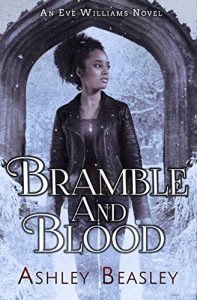 Bramble and Blood by Ashley Beasley:
Bramble and Blood by Ashley Beasley:
Welcome to St. Louis, home to mythological creatures, magic beings, and necromancer Eve Williams -expert on death and disappointment.
Especially disappointment since being fired from a prestigious job a with the Druid Brotherhood – the elite law enforcement of the magical community and the only family she’s ever known.
Now Eve’s left the magic community behind – except for her pain in the ass best friend who happens to be a witch – and she spends her time working for humans answering questions the faithfully departed left unanswered and avoiding the druids at all costs.
When a client asks for help to find a missing sister, Eve doesn’t see the harm in taking the unusual case – until her investigation uncovers the ritualistic murders of her fellow necromancers tied to the missing woman. Eve is reluctant to ask the druids for help but when an attempt is made on her own life, it forces her to work with the Druid’s Enforcer – a man who most in the magical community see as an assassin.
As onetime antagonists become hesitant allies while trying to find the killer, Eve finds herself knee-deep in sword-wielding druids, death magic, and psychotic witches.
McCall Richter works as a skip tracer, tracking down criminals, con men, and people who stop making payments on their fancy new spaceships.
Her job description says nothing about locating vast quantities of stolen maple syrup, but thanks to her helpful new android employee, she finds herself tramping through a “sugar house” on a frosty moon full of suspicious characters. The only witness to the crime? The junkyard dog next door.
Junkyard is a stand-alone novella set two years before Fractured Stars.
 Shattered Prisons by D. Glenn Casey:
Shattered Prisons by D. Glenn Casey:
Julie is just an easy-going artist, who loves to paint pretty pictures and go for walks in the woods. Then, her grandmother dies and leaves her the house and she finds out there are secrets buried behind its walls.
Ripped out of a quiet life of art, she finds she is the centerpiece in a war that’s been going on since the beginning of time and like it or not, she is going to have to follow in her grandmother’s and mother’s footsteps. Whether or not she believes in other-worldly demons and evil, they believe in her and they will use any weapon they can to draw her out, including threatening those she loves.
Jump into the battle between good and evil with both feet and hold on. It’s going to be a wild ride.
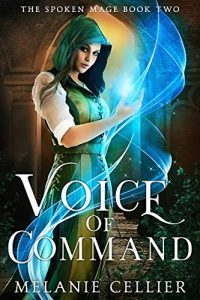 Voice of Command by Melanie Cellier:
Voice of Command by Melanie Cellier:
Elena has found the power in her voice—now she must decide how to use it
Finally accepted as a mage, Elena struggles with her commonborn roots. And when disaster strikes the kingdom, she can’t shrug off the death toll as the mageborn have always done. Yet the limitations of her spoken magic hold her back—both in saving lives among the people and in competitions in the Academy’s arena.
In desperation she turns to an unlikely source of assistance—Prince Lucas. But just as she begins to master her powers, she finds herself the pawn of stronger forces.
With everything she’s struggled for almost within her grasp, she must decide what—and who—is worth sacrificing to come into her full power and take her place among the mages.
Aliens exist… and, as it turns out, most of them aren’t that friendly.
Jacob Brown wasn’t even born yet the first time they attacked Earth.
He was only fourteen the second time it happened.
When Earth finally came together and fielded its first spaceborne military, Jacob didn’t hesitate to volunteer. Serving aboard a mighty starship, he’d be able to defend his planet—and his family—when, inevitably, they came again.
Just as he’s about to graduate training, however, Jacob is approached by an officer from Naval Special Operation Command and given a choice: volunteer for a risky mission to a dangerous, lawless world, or give up his dream of serving in the military and go home. He has no idea why he’s being singled out in such an unusual manner, but now it’s either agree to their demands or give up his dream of being on a starship.
Soon, getting his career back on the right track will be the least of his concerns when it seems like everyone—and everything—he meets is trying to kill him. When he stumbles upon a secret most people on Earth are blissfully unaware of he realizes it’s not just the aliens he needs to be worried about.
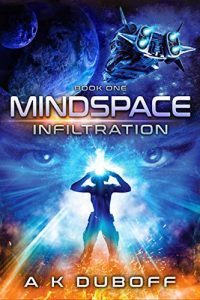 Mindspace: Infiltration by A.K. DuBoff
Mindspace: Infiltration by A.K. DuBoff
Prevent a stellar civil war… or die trying.
When Captain Kira Elsar comes face-to-face with a military assault mech inside a civilian research lab, it’s abundantly clear that MTech is up to no good.
Illegal alien nanotech experimentation. Clandestine political dealings. Disappearances. Connections all trace back to MTech’s newest research lab on Kira’s homeworld.
As the Tararian Guard’s sole telepath, Kira goes undercover to get to the bottom of the mystery. Hints point to a brewing stellar civil war, but she needs to gather proof. Except, the mysterious forces behind the conflict already have their own plans for Kira that will change her life forever.
Set in the internationally bestselling Cadicle space opera universe, the standalone Mindspace series is perfect for fans of sci-fi with superhuman abilities, political intrigue, military action, and devious aliens.
The Deliverance isn’t alone.
That’s not a surprise. The planet was chosen for a reason.
But the situation is more dire than Caleb ever imagined. The enemy he’s encountered isn’t the enemy he was seeking, and the conflict is expanding in ways he can barely conceive.
Taken prisoner by an opponent both familiar and foreign, he’ll have to prove himself one more time…
Or watch everything he’s fought so hard to protect be destroyed.
Destruction is the fourth book in the Forgotten Colony series.
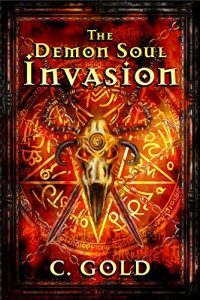 The Demon Soul Invasion by C. Gold:
The Demon Soul Invasion by C. Gold:
A summons gone very wrong, a demon lord bent on worldwide destruction, and a hated enemy turned temporary ally make this necromancer’s day a complete nightmare.
When a warlock calls asking for help, Marcus Blackmoor hangs up. After all, everyone knows the only good warlock is one who was never born. They murdered his parents, so this one can rot in prison where he belongs. But Marcus gets dragged into the investigation anyway since a soul needs interrogating and he’s the right necromancer for the job.
Except, all the souls have gone missing and there’s a terrible evil invading the spirit realm. It will take the combined help of his ghostly best friend, the warlock, and a kick butt fire mage to find the vengeful demon lord and banish him before he raises an army the likes of which has never been seen.
She’ll do anything to free her sister and save the Earth from invasion, even if she’s blackmailed into stealing sacred alien artifacts…and becomes the prey of the dark, deadly warrior sent to hunt her down.
Special Forces Space Marine Lara Traynor wants to save her sister and her planet from annihilation by the deadly insectoid Kantos. Earth’s Space Corps give her one option: steal three gems sacred to the Eon Warriors. Lara has never failed a mission and she doesn’t plan to start now. What she doesn’t expect is the big, hard-bodied warrior the Eon sent to stop her.
Security Commander Caze Vann-Jad was born and raised to be the best Eon warrior in the empire. Honed by the military academy, his years as a stealth agent, and by his hard warrior father, he has never failed. He knows one weak, inferior Terran is no match for him. But when he finds himself face to face with the tough, skilled Lara, he realizes he’s underestimated the female warrior.
When they are attacked by a Kantos kill squad, it soon becomes clear that the Kantos are planning something far darker and dangerous. Caze and Lara are forced to change their dangerous battle of wits and skill into a fierce battle for survival. Neither of these fighters believe in love, but on the trail of a stolen gem, they will ignite an unstoppable desire, and discover that not only are their lives at stake, but their hearts as well.
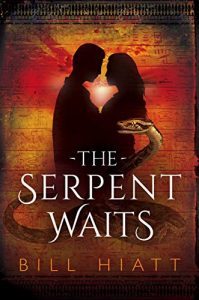 The Serpent Waits by Bill Hiatt:
The Serpent Waits by Bill Hiatt:
Amy Monroe’s journalistic instincts told her something was wrong in Santa Brígida. The town had too many strange disappearances, mental breakdowns, and bizarre weather patterns. Yet none of these anomalies got much press coverage, let alone serious investigation.
Planning to write a career-making expose, Amy goes to Santa Brígida undercover to find out the truth. She suspects clandestine scientific experiments, but from the moment a key source disappears—together with the motel in which she met him—she realizes that what’s really happening may be stranger than she could ever imagine.
Striving relentlessly to uncover secrets, Amy runs the risk of discovering the truth—that some secrets should stay buried.
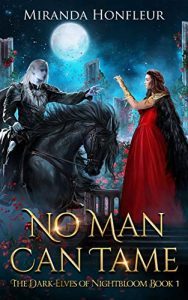 No Man Can Tame by Miranda Honfleur:
No Man Can Tame by Miranda Honfleur:
A human princess. A dark-elf prince. A kiss of fire and powder.
After a failed courtship in an ally kingdom, twenty-one-year-old Princess Alessandra returns home to a land torn apart by mutual hatred between the humans and the dark-elves. The “Beast Princess,” as Aless is known by courtiers, confidently sets her mind to ways of making peace, but her father has already decided for her: she is to marry one of the mysterious and monstrous dark-elves to forge a treaty, and go on a Royal Progress across the kingdom to flaunt their harmonious union. While she intends to preserve the peace, the Beast Princess has plans of her own.
Prince Veron has been raised knowing his life is not his own, but to be bargained away by his mother, the queen of Nozva Rozkveta, to strengthen the dark-elf queendom. When his mother tells him he is to marry a self-absorbed, vile human, he is determined to do his duty regardless of his personal feelings. After arriving at the human capital, he finds the “Beast Princess” rebellious and untamed—and not to be trusted.
Aless and Veron face opposition at every turn, with humans and dark-elves alike opposing the union violently, as well as their own feelings of dissonance toward each other. Can two people from cultures that despise one another fall in love? Can a marriage between them bond two opposing worlds together, or will it tear them apart for good?
Jain, a former SEAL whose mind is now the AI core of an advanced alien warship, has agreed to broker peace between humanity and the extraterrestrial race known as the Mimics.
Unfortunately, a new breed of alien has decided to crash the party. These newcomers, part of the hostile Link empire, aren’t very happy humanity is trying to coax a former member species into signing a treaty.
Jain and the Void Warriors have to fight off this new threat while struggling to salvage the smoldering ruins of the peace talks. Things certainly don’t look good, not just for themselves, but humanity: if they can’t secure allies against the Link, Earth will eventually be crushed.
Some days, having your mind stored in the AI core of a starship just isn’t all it’s cracked up to be.
They’ve watched us for centuries through the Rift.
They’ve prepared.
Invasion is inevitable.
The Earth Fleet has known of the Watchers for years, unwilling to share the knowledge with humanity. Now it might be too late.
Hidden away from the Fleet, one man is creating a new colony ship destined for the other side of the Rift, but he’s missing a few pieces.
Three other people have varied paths to get there. Ace goes from the streets of Earth to the Fleet training facility on the moon. Flint, an ex-Fleet pilot, must decide if a job is worth his life, and Wren, imprisoned for a secret project years ago, is given hope as an unlikely ally whispers words of escape in her ear.
Their journeys lead to Councilman Jarden Fairbanks, who knows of the impending invasion, and has prepared. All they can do is wait for the Rift to open once again, and see what’s on the other side.
Rift joins an ensemble cast facing immeasurable obstacles. If you enjoy space battles, prison breaks, androids, and aliens, buried under a shroud of mystery, this book is for you. Try it today!
It’s Jake and Boo’s first Christmas together, and they’re heading to Waxahachie to spend it with Petreski’s family. As if meeting your boyfriend’s parents isn’t nerve-wracking enough, there’s also a mob of siblings, a town full of gossips, trouble with a holiday display, and someone’s been sending poison pen letters to the local priest. Oh, and the pie is a bit of a disappointment.
In a house full of Cats, the nights are anything but silent, and it’s not long before Jake is convinced the Petreski family home is haunted. The truth, though, may be even stranger.
Who said small town life was boring?
Now with extra chocolate and nuts! And an elf.
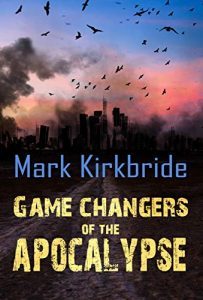 Game Changers of the Apocalypse by Mark Kirkbride:
Game Changers of the Apocalypse by Mark Kirkbride:
It’s always the end of the world when you break up with someone. This time it really is… Everyone on the planet has mysteriously disappeared, leaving exes Greg and Polly. They’ve survived the apocalypse, yet shouldn’t have. Battling each other and a malevolent entity that teases them with their fate, how long can they remain ahead? Even more terrifying than everyone else on the planet disappearing is what’s about to take their place…
The war was over, yet the Sargans came and bombed his world to ruin…
They stole his life by making him a slave, but Kragyn Vermaktu was no slave!
He was a Farseek Warrior. His rebellion landed him on Julconi Prison Planet…
No guards, no rules…
A place where strength meant survival…
Stolen from Earth, sold as a slave Reanne Winter is forced to kill or be killed…
Earning her a one-way trip to Julconi…
Terrified by a mob of males outside the gate, she was sure she would be raped and killed before the day ended…
Enter Kragyn…
He calls her solmatu and offers to get her to safety.
A shock of attraction flashes between them as soon as they touch…
She knows she won’t get a better offer.
Can the passion that burns between them grow into the legendary solmatu bond?
Or is it just a symbiotic relationship born of the need to survive?
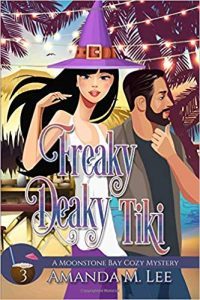 Freaky Deaky Tiki by Amanda M. Lee:
Freaky Deaky Tiki by Amanda M. Lee:
Hadley Hunter is learning about life, love … and being a witch.She has a hot and hunky boyfriend, new friends, and family she didn’t know existed until recently.Her plate is full.Life gets even busier when a Detroit grim reaper named Aisling Grimlock hits Moonstone Bay for her honeymoon. Aisling is loud, brash … and pregnant. Unfortunately, she’s not one of those women who gets happy and develops a glow at the notion of a new baby.When a body turns up on the docks, Hadley decides to help her boyfriend Galen investigate. All she knows for certain is that the murder looks ritual thanks to the tiki mask left behind … and the gaping wound in his chest.Since she’s bored and limited, Aisling latches on to Hadley and volunteers to help. That means zipping around the island and investigating the local cult that lives in the forest.Aisling has specific ideas about what should be done. Hadley has her own ideas. And Galen wants them both to steer clear of his investigation.Things are bound to collide … and they do in spectacular fashion.What happens when Detroit’s mouthiest reaper and Moonstone Bay’s newest witch collide? You’re about to find out.The stakes are high, death is in the air … and a few more secrets are about to be unveiled. Strap in, because things are about to get freaky.
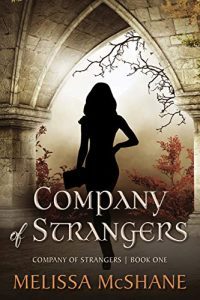 Company of Strangers by Melissa McShane:
Company of Strangers by Melissa McShane:
The wizard Sienne hopes to make a name for herself as a scrapper—someone who scours the ruins of the Empty Lands for treasure and lost magical artifacts. But first she must find someone willing to take a chance on a desperate beginner.
When Sienne finally catches a break, she becomes part of a ragtag group of adventurers—a desperate scrapper named Dianthe, her wizard-hating partner Alaric, the drunk priest Perrin, and a young fighter named Kalanath.
But finding the treasure proves only the beginning. They must learn to work together as a team. Their very survival may depend on it.
An epic adventure of daring quests, second chances, and the power of friendship.
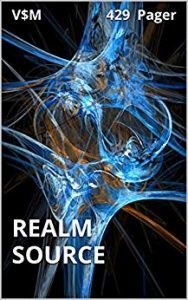 Realm Source by Vincent B. Moneymaker:
Realm Source by Vincent B. Moneymaker:
Are there places beyond heaven and depths below hell? Explore the boundaries of existence by travelling worlds beyond measure in a story beyond belief where universes are born and die but a father’s love for his child lasts forever.
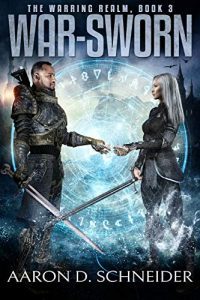 War-Sworn by Aaron D. Schneider:
War-Sworn by Aaron D. Schneider:
Broken people with sharp edges can carve their own destiny.
Luce isn’t just hurt, he’s broken and he’s not alone.
The Twilit Kingdom is in flames as the Gythraul Legions play out their death throes across the vulnerable countryside, while Queen Meabh turns her attentions to dissidents at Mount Falchrreg. An ancient and long-absent power returns––shaken and confused––while an elder evil seeks to realize an apocalyptic vision.
Luce still hasn’t picked up all the pieces, but Armageddon waits for no man, so its back into the meat-grinder with his ragtag crew. They’ve got gambits to dare, prophecies to fulfill, and sacrifices to make, with nothing but blood and fire ahead.
The fate of more than just the Twilit Kingdom hangs in the the balance, and Lieutenant Bollham is still grasping at the veil that hides the most terrible truths which underpin the erupting conflict. The truth, so long hidden, is about to ignite a fire that could burn all of Other-Realm to cinders and holocaust shadows. Times are desperate like never before and Luce is going to have to make some unlikely friends and even that might not be enough to save a world that isn’t even his own.
But you know what they say: what doesn’t kill you, only delays the inevitable.
 Validated by Valentine’s by Joynell Schultz:
Validated by Valentine’s by Joynell Schultz:
Ivory has the perfect man, from his microchip processor to his flesh-like exterior.
Ivory hated that she loved her Christmas gift this year. Her sister gave her the perfect humanoid companion, but there’s just one problem: he’ll never be able to say he loves her, no matter how much Ivory falls in love with him.
Was her dream man a present or a curse?
But when Ethan (Ivory’s Dream Droid) looks at her with those sweet blue eyes and secretly earns enough money to enter her in the city-wide bake-off, she realizes she doesn’t care. He’s hers. And that’s the best gift of all.
Ivory’s perfect world falls apart the closer she gets to the bake-off. It starts with a lost entry and Ethan having a few programming malfunctions, then she discovers someone’s deliberately sabotaging her. What started out to be a dream Valentine’s day, begins to turn into a nightmare. A large supportive family, a caring artificial companion, and the best cupcake recipe in the world might not be enough to uncover who’s setting Ivory up to fail.
Nathan Gallagher’s life on post-solar-flare Earth just took a turn for the worse.
Barrier Administration has ordered his quadriplegic son to be euthanized at a hospital deep in the solar badlands. Nathan’s only hope is his father, a brilliant aerospace engineer working on an experimental device that would enable Ian to walk again. Only healthy individuals can remain citizens of Barrier cities, and his father’s invention would grant Ian the right to live and re-enter the safe confines of the Barriers.
There’s just one problem: Nathan’s father is missing.
Can Nathan locate him even while the government watches his every step? And if he does find his father in time, can he really help?
BARRIERS is a sci-fi thriller set in a dystopian future where Earth is under siege by the sun. The powers that be decide who gets protection under the Barriers…and who doesn’t.
Jane Bond was just a simple elementary school librarian.
But then her life got sidetracked by digging up the AI Pilot of a 140 million year old spacecraft.
Now, she’s running all over the world looking for spaceship parts, falling in and out of love and trying to keep her friends from thinking she’s crazy. Not only that, but the ship she’s helping to recover starts sounding more like the Death Star than the Millennium Falcon.
When did life get so complicated?
A fun read with Bond-style gadgets, action, adventure, an alien intelligence for a sidekick and a little romance thrown in for good measure.
Dominion has Nova’s face and Reena’s name—Cyrillius will use and kill them if they’re caught. But being on the run in space isn’t so bad, Nova’s always wanted a different life, and she’s got it now.
It started with a rumor, that the Bahiri still exist—peaceful worshipers of the Nero and Neron. After what happened on Korpillion, Valen told Nova to find them, and to stay away from him. So that’s where the wanted crew aboard The Corsair is headed, across the entire galaxy to the G sector. Nova wants answers about what she did and how it’s possible.
She’s in denial. About what she might be. About where her heart lies. She knows Valen Nero is a bad man, so why is he the only one who fills the hollowness in her chest? Why does she ask him to keep his promise: I will come for you, Nova. And when he does, she’ll learn the truth about him, and what happened to shape him into the man he is today.
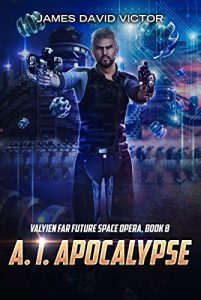 A.I. Apocalypse by James David Victor:
A.I. Apocalypse by James David Victor:
One rogue Artificial Intelligence to rule us all
Captain Eliard Martin has found himself in an alternate universe ruled by Armcore’s rogue artificial intelligence. Eliard and his alternate crew must take back the galaxy and return things to normal or humanity will never be the same. Can he change the past to save the future?
A. I. Apocalypse is the eighth book in the exciting Valyien series. If you like fast-paced space adventure, the rogue crew of the Mercury Blade will keep you entertained for hours.
 Imperius Wrecks by A.E. Williams:
Imperius Wrecks by A.E. Williams:
A Satirical Peek at the Future
What does our future hold?
If the recent turmoil in the United States is any indication, the outlook is possibly grim.
This short-story by acclaimed science fiction author and raconteur A.E. Williams explores one possible outcome.
Williams puts his redoubtable wit to the task of describing just what we’re up against, from a potential oligarchy, to the devastation of Earth from global warming, surgical nuclear strikes and the sheer ego of one man.
This modern parable of political will drags you kicking and screaming into your worst nightmare – or, perhaps, your ultimate fantasy.
You will be stunned, then shocked, then awestruck at how possible this scenario seems.
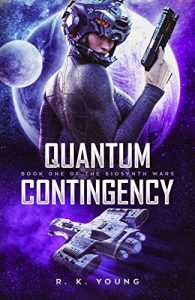 Quantum Contingency by R.K. Young:
Quantum Contingency by R.K. Young:
Few possessions are worth risking your life over, but she’ll roll the dice for her space freighter.
Andromeda “Mia” Spire lost her late father’s ship—and her home—in a dirty game of pulsar poker, and now she’s pulling out all the stops to get it back. But her pay sucks, and there’s no way in all the stinking swamps of Mandoorum that she’ll have the money in time to save it. The loan sharks will tear it apart for scrap. And she’ll be next.
Enter Toras Zaru, an eccentric hermit with too much money and a unique collection that’s missing an important element. He’s paying big bucks for someone to fly across the galaxy and face almost-certain death to get it. The payout would solve all her problems—except another crew has beaten her to the punch.
Luckily for Mia, Zaru thinks she’s got the skills they need to get the job done. If she’s willing to help the crew, they’re willing to give her a lift and a share in the profits. But after years of fending for herself, Mia isn’t much of a team player. If she wants her father’s ship back, she’ll have to learn to trust the crew, or risk being thrown out of the nearest airlock.
And that’s just the beginning of her troubles.
 Send to Kindle
Send to Kindle
January 29, 2019
Indie Crime Fiction of the Month for January 2019
 Welcome to the latest edition of “Indie Crime Fiction of the Month”.
Welcome to the latest edition of “Indie Crime Fiction of the Month”.
So what is “Indie Crime Fiction of the Month”? It’s a round-up of speculative fiction by indie authors newly published this month, though some December books I missed the last time around snuck in as well. The books are arranged in alphabetical order by author. So far, most links only go to Amazon.com, though I may add other retailers for future editions.
Our new releases cover the broad spectrum of crime fiction. We have plenty of cozy mysteries, small town mysteries, craft mysteries, animal mysteries, historical mysteries, 1920s mysteries, Civil War mysteries, Medieval mysteries, paranormal mysteries, crime thrillers, legal thrillers, action thrillers, historical thrillers, horror thrillers, police procedurals, romantic suspense, private investigators, amateur sleuths, stalkers, serial killers, axe murderers, assassins, vigilantes, forgers, lawyers, blackmailers, troubled priests, slaves and those who hunt them, crime-busting witches, crime-busting cats, crime-busting geneologists, crime-busting literary agents, missing mistresses, overweight detectives, murder on the seaside, in country manors and in small towns, in Chicago, New Orleans, Upstate New York, Paris and much more.
Don’t forget that Indie Crime Fiction of the Month is also crossposted to the Indie Crime Scene, a group blog which features new release spotlights, guest posts, interviews and link round-ups regarding all things crime fiction several times per week.
As always, I know the authors at least vaguely, but I haven’t read all of the books, so Caveat emptor.
And now on to the books without further ado:
 Murder in the Shallows by Beth Byers:
Murder in the Shallows by Beth Byers:
Violet and Jack go for a simple day on the water. They little expect their day of sun and fun to end with finding a body in the water.
The mystery of what happened to the young man in the shallows posses them both, and they unite in their desire to find out more. Will they be able to discover why Jack’s one-time friend was killed? Who would have done this and why?
 North Country Girl by Anthony DeCastro:
North Country Girl by Anthony DeCastro:
Voices from the past are best left there.
Myrtle Beach PI Fuzzy Koella knows this better than anyone.
But when his old teammate Jo Jo Bigtree calls about a young vagabond accused of murdering a nun, Fuzzy doesn’t heed that advice.
In the frigid landscape of Upstate New York, Fuzzy finds a town with a penchant for violence and dark secrets. An abusive high school hockey coach. A Voodoo doctor. A corrupt Tribal Sheriff. Even his own friend and the good Sister, herself.
As the temperature drops and the body count rises, Fuzzy questions the wisdom of sticking around to catch another bullet. Or worse, freezing to death. But a scared kid sits in jail that nobody seems to care about except Fuzzy.
Fuzzy Koella returns in his second, exciting adventure. If you love witty detective novels with a dose of hard-boiled action, you won’t want to miss North Country Girl.
When young priest Nicolas Chatry took his vows, he thought the hardest thing he’d have to deal with was accomplishing his duties from a wheelchair. Until a murderer steps into the confessional. Unable to recognize the voice or maneuver quickly enough to get a look at the killer, Nicolas has no way of identifying who admitted to such a horrific deed. And even if he did, his vows prevent him from telling anyone about it.
Unable to live with the knowledge that a predator is walking the streets of New Orleans, Nicolas breaks his vows and hires Shaye to do the impossible—find the killer before he strikes again.
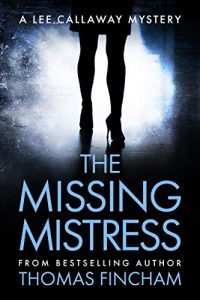 The Missing Mistress by Thomas Fincham:
The Missing Mistress by Thomas Fincham:
What happened to Lana Anderson?
One beautiful morning, David Becker, a respected lawyer, jumps off an overpass and onto incoming traffic. Detective Dana Fisher and Detective Greg Holt are tasked to find out why Becker decided to kill himself in such a public manner. Before they could begin their investigation, Fisher is pulled away from the case. Her brother, Casey, is in trouble and he needs her help.
Private Investigator Lee Callaway will finally get to spend the entire day with his daughter, Nina. But when Callaway finds out who the jumper is, he has no choice but to begin his own investigation.
To solve the mystery of Becker’s death, Callaway must find someone who has seemingly vanished into thin air.
 I Blackmailed Her Brother by Jessica Frances:
I Blackmailed Her Brother by Jessica Frances:
I blackmailed her brother, so she took my heart and held it ransom.
I made a mistake.
I did something unforgiveable.
I broke her trust.
I shattered the life we were building together.
And I hate myself for the pain I caused her.
But then someone thought they could threaten her,
Thought they could come after the woman I love.
They need to think again.
I am stronger than I have ever been before.
I am determined to win her back,
And no one is getting in my way.
Not our friends.
Not her family.
And definitely not the crazy maniac who is after her.
I will protect her.
I will salvage what we had,
And I will make us stronger because of it.
Not every relationship can be built on solid ground,
And maybe betrayal and blackmail might not make for a great foundation,
But then again, as some people say: there is nothing quite like love at first … crime.
 The Asylum by Nathan Dylan Goodwin:
The Asylum by Nathan Dylan Goodwin:
The job presented to forensic genealogist, Morton Farrier, ought to have been simple and easy. But the surprise discovery of an additional marriage to his client’s father leads Morton on an enquiry, revolving around a mysterious death in the county asylum. Requiring his various investigative genealogical skills, Morton must work to unravel this complex eighty-year-old secret and finally reveal the truth to his client.
This is the first story in the Morton Farrier genealogical crime mystery series.
 The Fat Detective by Christian Hayes:
The Fat Detective by Christian Hayes:
Private Detective For Hire. No Previous Experience.
Eugene Blake’s quit his job to become an old-fashioned private eye. He’s got everything he needs: a 1940s raincoat, a detective’s notebook and a little clicky pen.
When he meets the mysterious Melissa White she takes his breath away. Tasked with finding her missing husband, Eugene is drawn into the shadowy underworld of London and has to solve the dangerous puzzle of his very first case.
Once he’s been chased, punched and shot at, he wonders whether he should have stuck to his day job.
If you like your novels hardboiled you will love this funny, thrilling and very British twist on the private detective genre. The Fat Detective is the first book in the Eugene Blake trilogy by London novelist Christian Hayes.
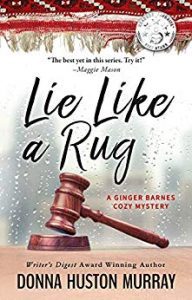 Lie Like a Rug by Donna Huston Murray:
Lie Like a Rug by Donna Huston Murray:
While escorting Bryn Derwyn Academy’s most infamous student downtown to be scared straight by a Federal judge, Ginger Barnes is shocked to find her childhood babysitter, textile professor Charlie Finnemeyer, on trial for fraudulently aging an Oriental rug. Even more alarming, Gin learns that two witnesses against her beloved “Uncle Wunk” suffered suspiciously convenient heart attacks.
Eager to assist the professor’s attorney, the veteran amateur sleuth pries secret information from a university president and uncovers past transgressions of a TV craft show host—all while acquiring an overnight education in early American textiles from experts at Winterthur and the Philadelphia Museum of Art. Others guilty of questionable behavior: two antique dealers, and Charlie’s overprotective wife.
Still, damning evidence can’t be swept under a rug. Before Gin can persuade anyone else that Charlie is innocent, she must first convince herself.
 A Dead Market by CeeCee James:
A Dead Market by CeeCee James:
Stella O’Neil finally has her first listing! A cute cabin with a gorgeous lake on eighty acres of breathtaking land. There’s just one tiny problem: the body floating in the lake.
If that weren’t unsettling enough, her phone rings off the hook with hundreds of potential buyers. In fact, the property is overrun with them! Stella digs out the truth that the lake is the obscure clue in an old legend that has been solved on the Internet.
But if only her troubles stopped there. She runs into one buyer who won’t take no for an answer. He seems to have way too much personal information about Stella herself, but the police refuse to take the threat seriously. As mishaps continue to develop, she is certain that she being hunted by someone with some sort of grudge against her.
Stella has to solve the murder and figure out the riddle so she can untangle herself from this legal and personal mess… before things go too far.
Southern United States of America, 1858.
A slave auction goes wrong leaving a group of slaves, that were meant to be sold to Billette Hall, in the hands of a cruel slave master. That sale left slaves separated from their loved ones and family members. Marion’s life changes when Master Jesse of Billette Hall Plantation summons her into his quarters for an important task. She must sneak into the auction grounds and help the displaced slaves escape. Those slaves are to be brought safely to Billette Hall.
Armed with a Revolver and a single shot, Marion, the 15-year-old slave girl, must lead the displaced slaves on a 4-day trek through the wilderness to safety. The trek is harrowing and filled with danger as they are forced to avoid bounty hunters, slave catchers and their dogs.
Making matters worse, Marion and the rest of the escaped slaves soon discover that there are nightmares more frightening than the slavers. They are being hunted! A strange unknown man, covered in mud and wielding an axe, stalks them. Everyone who has crossed his path is dead. Marion and her tiny group of frightened men and women will suffer the same fate unless they can rise above their fear.
Billette Hall is the horrifyingly new American Slavery thriller by DL Jones
 A Literal Mess by J.C. Kenney:
A Literal Mess by J.C. Kenney:
The first book in a new series featuring Allie Cobb brings the New York literary agent back to her Hoosier home town where a mysterious death keeps everyone on spoiler alert . . .
Allie Cobb left home for the literary circles of Manhattan to make her name out from under the shadow of her legendary father. Now his death brings her and her rescue cat Ursula back to the southern Indiana town of Rushing Creek, population: 3,216. But a tragic new chapter hits the presses when the body of her father’s hard-drinking, #1 bestselling client is found under the historic town bridge. The local police suspect foul play and their prime candidate for murder is the author’s daughter—Allie’s longtime friend.
Determined to clear her bestie, Allie goes into fact-checking amateur detective mode while trying to ignore the usual rumormongers. Those with means, motive, and opportunity include the vic’s ex-wife, his rejected girlfriend, the mayor, and a rival agent trying to mooch clients. With a rugged genealogist distracting her and the imminent Fall Festival about to send tourists descending on their once-peaceful hamlet, Allie needs to stay alive long enough to get a read on a killer ready to close the book on a new victim: Allie . . .
It’s Jake and Boo’s first Christmas together, and they’re heading to Waxahachie to spend it with Petreski’s family. As if meeting your boyfriend’s parents isn’t nerve-wracking enough, there’s also a mob of siblings, a town full of gossips, trouble with a holiday display, and someone’s been sending poison pen letters to the local priest. Oh, and the pie is a bit of a disappointment.
In a house full of Cats, the nights are anything but silent, and it’s not long before Jake is convinced the Petreski family home is haunted. The truth, though, may be even stranger.
Who said small town life was boring?
Now with extra chocolate and nuts! And an elf.
 Freaky Deaky Tiki by Amanda M. Lee:
Freaky Deaky Tiki by Amanda M. Lee:
Hadley Hunter is learning about life, love … and being a witch.She has a hot and hunky boyfriend, new friends, and family she didn’t know existed until recently.Her plate is full.Life gets even busier when a Detroit grim reaper named Aisling Grimlock hits Moonstone Bay for her honeymoon. Aisling is loud, brash … and pregnant. Unfortunately, she’s not one of those women who gets happy and develops a glow at the notion of a new baby.When a body turns up on the docks, Hadley decides to help her boyfriend Galen investigate. All she knows for certain is that the murder looks ritual thanks to the tiki mask left behind … and the gaping wound in his chest.Since she’s bored and limited, Aisling latches on to Hadley and volunteers to help. That means zipping around the island and investigating the local cult that lives in the forest.Aisling has specific ideas about what should be done. Hadley has her own ideas. And Galen wants them both to steer clear of his investigation.Things are bound to collide … and they do in spectacular fashion.What happens when Detroit’s mouthiest reaper and Moonstone Bay’s newest witch collide? You’re about to find out.The stakes are high, death is in the air … and a few more secrets are about to be unveiled. Strap in, because things are about to get freaky.
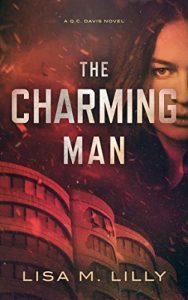 The Charming Man by Lisa M. Lilly:
The Charming Man by Lisa M. Lilly:
A blizzard rages. A young woman goes missing. A killer hides in the dark corners of an aging apartment complex.
As Chicago’s worst blizzard on record rages, a close friend asks Quille to help find a missing young woman.
The search takes Quille to River City, an aging apartment complex once seen as the cutting edge of Chicago architecture. When a well-known former resident is killed, downed power lines and multi-car pileups block police from reaching the building.
To prevent more deaths and find the missing woman before it’s too late, Quille must track the killer herself….
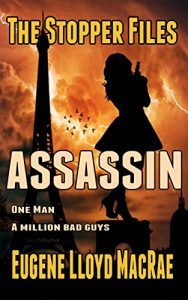 Assassin by Eugene Lloyd MacRae:
Assassin by Eugene Lloyd MacRae:
When those close to Merlin Arthur Dragon become targets of an assassin, he immediately springs into action, throwing caution to the wind to hunt down the perpetrator. But Interpol’s Stopper soon finds himself the target of a massive manhunt by his own organization. How did things become twisted so quickly? And why? What – and who – is behind the French Gendarmerie Nationale threatening to hunt him down and kill him? Unless Merlin can find the truth to those questions, death will be the final answer.
 Until Proven Guilty by Rachel Sinclair:
Until Proven Guilty by Rachel Sinclair:
Damien’s back! And this time, the murder case hits way too close to home.
Damien’s mother, Olivia, is being charged with murder. At first glance, Damien thinks that the murder charge is flimsy at best. Olivia’s friend, Dr. Tracy Dunham, died at her home of an apparent drug overdose. Olivia insists that she was simply sitting in her home, minding her own business, when Dr. Dunham came over to crash on her couch. She found him dead the next day.
The prosecutor’s office, however, charges Olivia with murder. Their accusation is that Olivia gave Dr. Dunham a deadly dose of pure heroin, which is what killed him.
As Damien gets further into the case, he finds that nothing is what it seems. Somebody apparently wanted Dr. Dunham dead – but who? And why? Damien discovers the shocking conspiracy that is truly behind the man’s death, but he finds himself in a race against time to find the evidence to prove his mother’s innocence. If he can’t get to bottom of who wanted Dr. Dunham dead, then his mother will go to prison for the rest of her life.
True, he doesn’t get along with his foul-mouthed, drunk mother, but she’s still his mother.
In the meantime, he also has to deal with a son, Nate, who is on the brink. Nate is slipping away, and Damien feels helpless to stop his son’s destruction. Can he save him in time?
 Murder at Broadstowe Manor by Jason Vail:
Murder at Broadstowe Manor by Jason Vail:
The adherents of Simon de Montfort from Herefordshire gather at Hereford Castle to select the county’s delegates to a Parliament Montfort has summoned in order to solidify his control of the kingdom. But the celebrations are interrupted when one of those put forward as a delegate, Sir Rogier FitzHerbert, is found hanged in his locked bedchamber alongside the body of a young man.The new coroner for the county rules the deaths a murder-suicide.But there are those who doubt that FitzHerbert could have murdered the young man and then hanged himself. And one of those faithful to the dead lord engages Stephen Attebrook to prove this was no suicide, but the cold-blooded murder of both.What looks like a routine murder inquiry, however, draws Stephen and his friends Gilbert Wistwode and Harry the carver into the game of shadows, for Montfort had sent the dead lord on a mission to the Welsh, bearing a letter with Montfort’s proposals for a secret alliance. Men would kill to get that letter, which went missing upon FitzHerbert’s death. Stephen finds himself in pursuit of that letter, for it seems to hold the key to the mystery.Stephen’s troubles pile up by leaps and bounds for he must dodge deputies sent after him by Sheriff Percival FitzAllan, who accuses Stephen of murder himself, and he delves deeply into Hereford’s underworld where death lurks in every alley and byway in his search for the truth. Murder at Broadstowe Manor is Stephen Attebrook’s most desperate adventure yet, for his life and fortune are at stake with his every step.
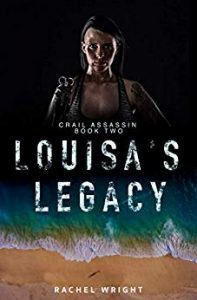 Louisa’s Legacy by Rachel Wright:
Louisa’s Legacy by Rachel Wright:
When Maja Larsson learns that her father was murdered on a remote Pacific island eight years earlier, she embarks on a journey with lawyer Will Brownlie to find out what happened. It soon becomes clear that someone is trying to cover up the real story and as Will investigates, he realises their lives are in immediate danger. Jack Clayman, a skilled black-hat hacker, will stop at nothing to protect his secret, including killing anyone who gets too close.
 Send to Kindle
Send to Kindle
January 25, 2019
Star Trek Discovery Visits “New Eden” and Still Feels Like Star Trek
Welcome to my ongoing coverage of Star Trek Discovery. For my takes on previous episodes, go here.
“New Eden”, Star Trek Discovery‘s second episode of the second season just aired and the show actually feels like Star Trek for two episodes in a row now, which has to be some kind of new record. Not that Discovery didn’t manage to be consistent for two episodes in a row even during season 1, it certainly did. But for some reason, it never felt like Star Trek for two episodes in a row.
So Alex Kurtzman and the new production team have finally figured out how to make something that feels like Star Trek. That’s a generally positive development. There’s only one problem.
“New Eden” is a rather mediocre example of Star Trek.
Warning: Spoilers under the cut!
At the start of “New Eden”, the Discovery, now under the command of Captain Christopher Pike, is still investigating those mysterious signal bursts that have the Federation so worried. A new signal burst has been detected in the beta quadrant, much too far away for a regular warp drive to reach, so Pike orders the magic mushroom drive, the central MacGuffin of season 1, reactivated. Saru tries to explain why this is not a good idea, basically you can only use and control the magic mushroom drive, if you enslave an innocent creature, the tardigrade, or if you put a human being, Paul Stamets, at risk, so the magic mushroom drive should only be used in absolute emergencies. Pike, however, declares that the signal bursts are such an emergency and since there is no tardigrade handy, it’s Stamets’ turn to operate the magic mushroom drive once more. Stamets isn’t particularly happy about this for obvious reasons – the magic mushroom drive takes a huge toll on his health and besides, the last time he used it he landed the Discovery in an alternate universe, got lost in the spore network and only found his way out with the help of his dead partner/husband Dr. Culber. In many ways, it seems as if seeing Dr. Culber again or maybe not seeing him is what worries Stamets most, which is certainly understandable, considering that Stamets is still grieving.
Ordering the magic mushroom drive to be used in spite of the risks is very much what Lorca would do (and did over and over again, though even Lorca occasionally worried about Stamets’ health), but it seems out of character for Pike. Not to mention that “There is a mysterious signal burst” hardly qualifies as an emergency, unlike “There is a colony in danger and the Klingons will kill everybody, if not stopped”. And for that matter, why is the Federation so bothered about those signals at all? After all, mysterious space phenomena are hardly something new for the Federation, since Starfleet vessels seem to encounter them every other week or so, unless distracted by more pressing concerns such as a war. So what makes this mysterious space phenomenon so much more alarming than the other five Starfleet must have encountered this week alone?
But that’s a question for another episode, because Stamets gets the Discovery to the beta quadrant without any obvious ill effects, though he’s even grumpier than usual afterwards. But once they get there, they don’t get any answers about the mysterious signals, but find a new mystery instead, a two hundred years old English language distress signal, which seems to date back to what is World War III in the Star Trek timeline, i.e. before the invention of the warp drive. So how precisely did the signal and the people who sent it up get on the other side of the galaxy?
Tracing the signal leads the Discovery to the titular New Eden (though apparently the planet is named Terralisia, as Kayti Burt points out at Den of Geek), a low tech world that’s inhabited by humans and surrounded by rings of radioactive debris. This being Star Trek, Pike decides to send down an away team to investigate, consisting of himself, Michael Burnham and Lieutenant Owosekun. “Lieutenant Who?” you ask. Well, Lieutenant Owosekun is the black woman with the cornrows from the bridge crew, so apparently Discovery is sticking to its plan of giving the bridge crew more to do. As for why Owosekun (Does the character have a first name? Cause I certainly can’t recall it) was chosen to accompany the away team, it turns out she was raised by a Luddite community and should therefore be able to fit into a low tech society much better than either Pike or Michael. Now this is actually a fascinating bit of information and I for one would like to know more, such as how someone from a Luddite background like Owosekun came to join Starfleet? And in fact, “New Eden” might have made a lovely spotlight episode for Owosekun. Alas, the script mostly treats her like the redshirt of the week, only that she gets to survive and even has a few nice moments such as figuring out of to turn on ancient equipment or picking a mechanical lock, when both Michael and Pike fail. Still, more bridge crew is always nice.
Upon arrival on New Eden, Pike, Michael and Owosekun find what looks like a typical American village as well as what looks like a typical American clapboard church, though the interior contains a few symbolic nods to other religions, a rather ominous altar inscription that “Those who live by the old ways burn” as well as a stained glass window depicting a red angelic figure that looks uncannily like the vision Michael had last week, the same vision that had Spock so upset that he checked himself into a psychiatric hospital, which Pike tells Michael against Spock’s explicit wishes.
The team quickly learns that the people of New Eden were rescued from Earth during World War III by what they believe to have been divine intervention. This is also why they have retained religion, unlike the rest of humanity, though their faith is a blend of “all religions of Earth”, hence also the symbols in the church. They also happen to believe that they are the last survivors of humanit and that Earth has been destroyed by World War III, which is why they have foregone all modern technology. There are shades of A Canticle for Leibowitz by Walter M. Miller and The Long Tomorrow by Leigh Brackett here, but then Star Trek has always liberally borrowed from science fiction of the 1940s to 1960s.
The religion mash-up of New Eden is a neat idea, but it doesn’t quite work in practice. For starters, I find it hard to believe that their religion is a blend of “all religions of Earth”, because Earth has rather a lot of religions, including some very tiny ones. Does their religion blend include Jedi Knights for example (probably not – wrong franchise)? How about Scientologists? The Church of the Flying Spaghetti Monster? A faith practiced only by approximately two hundred members of an isolated indigenous tribe in the Amazonas basin? Probably not. At least, based on the symbolism in the church, their faith seems to blend several of the major world religions, which is fine in itself – and I do applaud Discovery for remembering that “major world religion” does not just include the three Abrahamitic faiths, but also Hindusim, Buddhism, Shintoism and others, which means they do one better than my old religious education teacher who when asked when we would learn something about Hinduism and Buddhism, replied that those religions weren’t relevant enough and got very pissed off, when I pointed out that there are more Buddhists and about as many Hindus (and Yezidi, for that matter, though I wasn’t aware of them at the time) in Germany as Jews, so why didn’t we learn about them? So kudos to Discovery for being more open-minded than my tenth grade religious education teacher. Nonetheless, I can’t help but notice that the blended faith of New Eden looks very Christian. The cross is the most prominent symbol in the church and the church itself looks very Christian and very much like a particular American Protestant flavour of Christianity. Why does the worship place of a blended religion not look more like a mosque, a Hindu temple, a synagogue, a Buddhist temple, a Shinto temple? For that matter, why does it look so very much like an American mainstream church? Even West European churches look quite different architecturally and Eastern Orthodox churches are completely different. Yes, I know, because it’s an American TV series made by likely at least culturally Christian Americans and because they probably used a real church to shoot those scenes. And coincidentally, the “Ooops, we accidentally started a religion” episode of The Orville last season also featured a very Christian looking church. Though Discovery is still lightyears ahead with regard to religion compared to The Expanse, where the only religions we ever seen are the Mormons of all people (and they only exist to supply a plot device needed in season 2), a military chaplain of an unknown Christian denomination and a fringe cult. Apparently, a Methodist pastor shows up in season 3 and there is a Buddha statue seen in the background of a few scenes in season 2, in the office of a character who appears to be Hindu – arrgh!
As for the divine intervention that saved the people of New Eden, unsurprisingly it turns out to be a red angel like the one seen in the church, a red angel that looks suspiciously like Michael’s vision last episode and the nightmares plaguing Spock. In order to explain the phenomenon, Pike paraphrases Arthur C. Clarke and declares that any sufficiently advanced alien technology would seem like divine intervention to the people of New Eden. There’s also a bit of a religious conflict here, when Michael bluntly declares herself an atheist who worships science, which begets the question why the so desperate to be Vulcan Michael does not follow the Vulcan religion, even though Sarek and Spock clearly do. Meanwhile, Pike’s father was a professor of comparative religion, which is not just a nice bit of character background, but also means that Pike is more open minded with regard to religion than Michael and that he can also handily explain the symbolism inside the church.
But religion isn’t the only point where Michael and Pike don’t quite see eye to eye (and isn’t it telling that Michael can’t stop rebelling even against a guy who seems to be very much a good captain?). Because Michael wants to inform the people of New Eden that humanity survived World War III and are now part of the scientifically advanced Federation and have interstellar travel, while Pike wants to leave the people of New Eden alone, since they seem to be perfectly happy in their low tech dystopia and also because intervening would bring them in conflict with the Prime Directive a.k.a. General Order No. 1, which begets the question if the Prime Directive even applies to what is clearly a lost human colony. Not to mention that New Eden isn’t quite as low tech as it seems, because someone had to send that distress signal. And indeed it turns out that there is a group of sceptics/heretics on New Eden, led by a man named Jacob, who have preserved the old technology and who are also behind the signal.
Things come to a head when Pike is near fatally injured (he sure does get into danger a lot) and the team has to be emergency beamed back aboard the Discovery, which happens to be witnessed by a bunch of colonists. The High Priestess believes it’s an act of divine intervention, while Jacob deducts that the strangers have to be space travellers. Once aboard the Discovery, Pike is quickly cured, but a new problem arises, because it turns out that the ring of radioactive debris around New Eden is threatening to rain deadly meteors down onto the planet’s surface. Both Pike and Michael agree that they have to save the people of New Eden – which is a lot better than Picard who was willing to let a whole pre-warp civilisation on a doomed planet die because of the Prime Directive in one of the most infuriating Star Trek episodes of all time – though they disagree about how. Michael simply wants to beam everybody aboard the Discovery and give them the chance to reintegrate into Federation society, while Pike wants to preserve New Eden’s way of life as much as possible. In the end, it’s Tilly who comes up with the solution.
Tilly’s subplot in this episode follows on from her subplot in the last episode, where she was tasked with recovering a mysterious, dark matter laden asteroid. That asteroid is still stored in one of Discovery’s hangars and Tilly now wants to use its unique properties to find a way to use the magic mushroom drive without putting Stamets at risk, especially after he tells her how emotionally upsetting seeing his dead partner/husband in the spore network was. So Tilly does something rather stupid and experiments on the asteroid alone, without telling anybody, and promptly gets herself injured. In the sick bay, she is confined to bedrest by the Discovery‘s surviving doctor (whose name I still don’t know) and gets a mix of admonition and pep talk from Saru, who tells Tilly that she cannot help others if she doesn’t take care of herself first and that she is important. It’s a sweet moment and shows how much Saru has grown as a character. So far he doesn’t have a lot to do in season 2, though I guess his moment will come. While confined to her bed, Tilly mulls over the problem of how to deal with the radioactive debris with a never before seen crewwoman named May. Eventually, Tilly comes up with a solution and bursts onto the bridge in her hospital gown and blurts out her plan to Saru.
Tilly’s idea involves using the mysterious asteroid and its even more mysterious properties, the same properties that landed Tilly in the sick bay in the first place, to draw the radioactive debris away from New Eden. This also involves some fancy flying manoeuvres and gives another member of the neglected bridge crew, the scarred redhead whose name is apparently Kayla Detmer, a chance to shine and show off her mad flying skills. Needless to say that the manoeuvre succeeds, New Eden is saved and Pike in the practical manner of the Original Series decides to bend the Prime Directive just a little to allow them to tell Jacob the truth and give him a generator, which will help the colony without impacting their way of life too much, in exchange for a recording of the red angel as it rescues the ancestors of the people of New Eden. Though the recording doesn’t actually show anything we haven’t seen before, namely an angelic figure.
Oh yes, and Tilly’s new friend May? It turns out that May isn’t real – which isn’t that much of a surprise, since no one except Tilly ever interacts with her – but the ghost of an old schoolfriend who died years ago. And if Tilly sees ghosts after a brief interaction with the asteroid and the magic mushroom drive, what does this mean for Stamets and Dr. Culber and might this be the reason why Wilson Cruz is actually in the opening credits, even though his character is very much dead?
“New Eden” is not a bad episode of Star Trek Discovery at all and it certainly looks good and is well shot and directed, but then if there is one person in the known universe who knows how to make Star Trek, it’s Jonathan Frakes a.k.a. Commander William Riker, who directed “New Eden”. And indeed, any problems with the episode lie not with Frakes’ direction, but with the script. Because “New Eden” manages to feel both slight and rushed at the same time.
In many ways, “New Eden” feels very much like a midseason filler episode of The Next Generation or Voyager (and indeed, Camestros Felapton points out how very much like The Next Generation this episode feels in his review of “New Eden”), though the plot is borrowed almost wholesale from the Original Series episode “The Paradise Syndrome” a.k.a. the one where Kirk falls in love with a Native American priestess in space. Which reminds me that Pike, who in his two appearances in the Original Series seems to have been as much of a womaniser as Kirk, hasn’t managed to fall for any planetary beauties so far, which is progress, I guess.
Interestingly, “New Eden” also feels like an Orville episode and indeed The Orville had at least three episodes that were a bit reminiscent of “New Eden”. However, The Orville somehow manages to put a fresh spin on shopworn Star Trek plots, while Discovery just reiterates the same philosophical dilemmas that used to characterise Star Trek from the original series to Enterprise and the only new spin it offers is action, action and more action as well as a bit of an arc plot mystery.
And talking of The Orville, it’s a bit strange how Discovery and The Orville have started to resemble each other, even though both have vastly different approaches to the general idea of Star Trek (which is a good thing, because there’s room for more than one take on Star Trek). However, the elevator gag in last week’s episode felt very much like a deleted scene from an Orville script. And this week, we get a Discovery episode that feels like an Orville episode, except with fewer jokes. Meanwhile, The Orville recently took on Star Trek Discovery‘s “The protagonist’s love interest is an undercover Klingon” subplot from last season and somehow managed to handle it much better and make the revelation a genuine surprise. And they did it in only one episode – two, if you count the episode which introduced the character in their Klingon/Krill form.
I don’t think anybody expected The Orville to pull ahead in the race of the Star Treks. But The Orville knows what it wants to do and does it really well, while so far Discovery is still searching for an identity. For the moment, that identity seems to be like classic Star Trek and/or Next Generation, but with more action and much better special effects. Which isn’t the worst path for the show to take, though it feels rather safe. And I for one miss the glorious weirdness that season one displayed on occasion, usually during its better moments.
 Send to Kindle
Send to Kindle
January 22, 2019
A Few Words on Some Very Lacklustre Academy Award Nominees
So the nominees for the 2019 Academy Awards have been announced today and it’s a very lacklustre selection.
The SFF world is rejoicing that Black Panther got a Best Picture nod, the first ever superhero film to do so, which is bloody depressing in itself, because superhero movies are not just the most successful film genre of the past ten years or so, there have also been several very good ones that would have deserved this nod (Logan definitely, The Dark Knight, though I don’t care for it, Captain America: The Winter Soldier, etc…), but were resoundingly ignored. Plus, as Jacob Trussell points out at Film School Rejects, the Oscars still don’t give a fuck about horror, even though there were some excellent horror movies this year. Okay, A Quiet Place got a best sound editing nod, but that’s it. Meanwhile, musicals and westerns were not necessarily deeper than superhero films or horror films when they ruled supreme at the box office and both genres still got a lot of best picture nominations and wins.
Besides, it’s telling that Black Panther‘s other six nominations are all in the technical (sound editing, sound mixing, production design and costume design) and musical (best original song, best original score) categories. Notably absent are a best director nod for Ryan Coogler, a best screenplay nod as well as any nominations in the acting categories. Michael B. Jordan for best supporting actor would have been the obvious choice here, maybe also Chadwick Boseman and Letitia Wright or Danai Gurira. And no nominations in the acting, best director and best screenplay categories usually mean that a film won’t win best picture, no matter how deserving.
And so I’m pretty sure the best picture nod for Black Panther will remain just that, a nod. It has very little chance of winning, as little as Get Out! in 2018 and Mad Max: Fury Road in 2017. If there’s any justice in the world, Black Panther will take costume and production design, though you never know and the gerontocracy that is the Academy of Motion Picture Arts and Science may just go for The Favourite or even Mary Poppins Returns. I don’t see much of a chance for Black Panther in the music categories either – Academy voters like sappy ballads and the completely superfluous third reiteration of A Star Is Born will probably take best song – though it might just take the sound categories.
I’m not sure what will win best picture – BlacKkKlansman is the only other nominated movie I actually like, but that one isn’t any more likely to win than Black Panther. The rest of them range from overrated to terrible, blatant Oscar bait. I guess The Favourite is the best we can hope for. It’s not bad for a historical drama and Olivia Colman is probably my personal favourite in the best actress category, but nonetheless. I’m very much over historical dramas and have been for years. Most of them have very little new or interesting to say, though Queen Anne is at least not as overexposed as the entire Tudor period.
There are some other nods to superhero movies, Spider-Man: Into the Spider-Verse and Incredibles 2 in best animated feature and Avengers: Infinity War in best special effects. If there’s any justice in the world, Spider-Man: Into the Spider-Verse would win best animated picture, but the Academy shares the inexplicable American love for Pixar, so Incredibles 2 will probably win.
Meanwhile, what gets a lot of Oscar nods is the Academy’s favourite genre, the bio pic. Now bio pics are something I just don’t get – they’re usually boring, almost always falsify the subject’s life story to match social conventions of the day, hardly anybody likes them and they’re usually forgotten within a few years. But for reasons best known to themselves, the Academy just loves bio pics and always has, as far back as the 1930s. Even if bio pics are often the most blatant Oscar bait around and also usually the most “What the ever loving fuck?” of past Oscar decisions. Or can anybody explain why James Cagney won his lone best actor Oscar for the crappy Yankee Doodle Dandy rather than for Angels With Dirty Faces or White Heat?
The year’s crop of Oscar nominees includes no less than six bio pics, namely Vice, Bohemian Rhapsody, Green Book, Werk ohne Autor, Can You Ever Forgive Me? and The Favourite. I guess you could also make a case for BlacKkKlansman, since it’s based on a true story. Ditto for Roma. Plus, two Oscar favourite – A Star is Born and The Wife – are not actually bio pics, but very much feel like bio pics, only that their subjects never existed.
But what makes the focus of this year’s Oscar nominations on bio pics even worse is that two of the movies in question – Green Book and Werk ohne Autor – were vehemently refuted by their subjects. The family of jazz pianist Donald W. Shirley was so angry about Green Book and accused the film of hurtful lies to the point that Mahershala Ali, who plays Donald W. Shirley in the movie, actually apologised, which is a classy thing of him to do, considering that the fault lies not with him, but with the script and the director. And the notoriously media shy artist Gerhard Richter, who almost never gives interviews, was so infuriated by Werk ohne Autor (which utilises some extremely painful bits of Richter’s biography such as the fact that his aunt was a victim of a Nazi euthanasia program) that he emerged from hiding to vehemently renounce it. I imagine that Dick Cheney isn’t particularly happy about Vice either, but then I don’t much care about how he feels, cause he very much had it coming. Meanwhile, Freddy Mercury and Queen Anne are no longer around to complain about Bohemian Rhapsody (which did fudge details of Mercury’s life and pushes a homophobic “gays are only good as long as they’re monogamous” narratives) and The Favourite respectively. Only the subject of BlacKkKlansman actually seems to like the movie. As for writer/forger Lee Israel who is the subject of Can You Ever Forgive Me?, I’d never heard of either her or the movie until today, so I have no comment.
Nonetheless, honouring two bio pics which insult their subjects is not a good look for the Academy. Plus, Green Book has attracted more than its share of controversies, such as accusations of perpetuating the magical negro narrative as well as allegations of sexual misconduct against the director and islamophobic tweets against the screenwriter, which are made even worse by the fact that Mahershala Ali, one of the stars of Green Book, is muslim. Honestly, Academy, this is the movie you want to honour in two thousand fucking nineteen?
Not to mention that Mahershala Ali and Viggo Mortensen have equal amounts of screen time in Green Book, but for some reason Viggo Mortensen was nominated for best actor and Mahershala Ali for best supporting actor. What is more, Adam Driver was nominated for best supporting actor for BlacKkKlansman, while star John David Washington doesn’t get any nomination at all. Honestly, Academy, have you learned nothing from the “Oscars so white” debacle of two years ago?
Okay, so there are actors of colour nominated in all four acting categories as well as two directors of colour (Spike Lee and Alfonso Cuarón). But it’s notable that there’s always just one actor of colour nominated in each category – Rami Malek in best actor, Yalitza Aparicio in best actress, Mahershala Ali in best supporting actor. Only best supporting actress gets two nominees of colour – Marina de Tavira and Regina King. And this in a year that had several excellent movies with highly diverse casts. Sorry, but this stinks of tokenism.
Meanwhile, the white nominees in the acting categories are mostly examples of make-up and fat suits doubling as acting, unless you’re Doug Jones, that is, (anybody nominated for Vice), ugliness doubling as acting (Olive Colman, whom I like a lot, for The Favourite) as well as the Academy’s inexplicable love for Bradley Cooper who gets nominated for everything he’s ever done except Rocket Raccoon.
Meanwhile, the German cultural press is all agog about the best foreign language picture and best cinematography nominations for Florian Henckel von Donnersmarck’s Werk ohne Autor, which is inexplicably named Never Look Away in English (an accurate translation would be “Work without an Author”). Now Florian Henckel von Donnersmarck already won a best foreign language Oscar in 2007 for The Lives of Others, an awful film that’s very much responsible for reducing the former German Democratic Republic to the all Stasi all the fucking time image that prevails today, even though reality was a lot more complex than that. And yes, I’m still pissed off that The Lives of Others robbed Pan’s Labyrinth of its well deserved Oscar. Now I think that all three German best foreign language picture winners are awful (the other two are The Tin Drum and Nowhere in Africa), but The Lives of Others is the worst of the three.
However, Werk ohne Autor won’t win the 2019 best foreign language Oscar, because it’s pretty clear that Roma will take that one, since everybody seems to love Roma. Now I’m pretty sure that Roma won’t win best picture or any of the acting categories (sorry, Yalitza Aparicio and Marina de Tavira – I’d be happy for both of you), though Cuarón might just snag best director or best screenplay. Maybe best cinematography, too – that category is hard to predict.
Meanwhile, the real best foreign language picture, Capernaum, which made me cry (and I hardly ever cry at movies) won’t win and neither will the second best foreign language picture, Shoplifters (honestly, if you love found family stories, watch them both). And for that matter, why no best actor nod for Zain Al Rafeea, the young star of Capernaum? But then, America doesn’t care about the plight of refugees and street kids, but the Academy really likes movies about domestic servants for some reason (see Roma and The Help a few years ago and also the completely superfluous Mary Poppins Returns). I guess they need the periodic reminder that their domestic servants are indeed human. And while we’re on the subject, it’s bloody depressing that eighty years after the first person of colour won an Oscar (the wonderful Hattie McDaniel for Gone with the Wind), actors of colour still get nominated for and sometimes win Oscars, when they’re playing domestic servants (Viola Davis and Octavia Spencer for The Help, Yalitza Aparicio for Roma) or other cliché roles, but not when they’re playing mathematicians (Taraji P. Henson, Janelle Monae and Octavia Spencer in Hidden Figures) or superheroes (anybody in Black Panther).
Over at File 770, Bonnie McDaniel said that the best picture nod for Black Panther represents baby steps forward, but that’s all it is, baby steps and tokenism. Because the vast majority of this year’s Oscar nominees is the same stuff that always gets nominated, movies hardly anybody except the Academy actually likes, which will be forgotten in ten years of time.
 Send to Kindle
Send to Kindle
January 19, 2019
Star Trek Discovery is back… and it actually feels like Star Trek, for a change
It’s hard to imagine that two years ago, we didn’t have any new Star Trek on the screen at all beyond the vague promise of a fourth film in the J.J. Abrams reboot series (which has since been shelved). Two years on and there’s suddenly a lot of Star Trek on the screen and even more coming up. There’s Star Trek Discovery, there is the Short Treks spin-off series of mini episodes focussing on Discovery‘s characters, there is The Orville, which is basically Star Trek with the serial numbers filed off and even did its own version of Discovery‘s “the protagonist’s love interest is an undercover Klingon spy” plot from last season, there was “USS Callister”, Black Mirror‘s foray into Star Trek territory. And the CBS All Access streaming service has apparently figured out that Star Trek is the only thing that can get them subscribers, since not enough people give a flying fuck about The Good Wife/The Good Fight, and are milking that cash cow for all it’s worth, so there are also two animated and two live action Star Trek shows in development, respectively focussing on a post-Next Generation Jean-Luc Picard and Michelle Yeoh as the villainous Philippa Georgiou from the mirror universe. There even are fears that viewers might eventually start suffering from Star Trek overload. Honestly, these are the best times for Star Trek fans since the 1990s.
And now Star Trek Discovery, the show that kicked off the Star Trek resurgence, is back for its second season. Now I freely admit that I have been pretty harsh on Discovery at times (read my episode by episode reviews here), perhaps a little too harsh. Part of the reason was purely personal – Star Trek Discovery premiered on the night of the 2017 German general election, when I was really depressed by seeing my own country taking a step further towards dystopia, so a new Star Trek show featuring a dystopian Federation was about the last thing I needed. But a large part of the problem was that Star Trek Discovery‘s first season was wildly inconsistent (apparently due to behind the scenes drama and switching showrunners every other episode) and seemed to be about four very different TV shows of highly varying quality, only some of which actually feel like Star Trek, awkwardly stitched together. The result is very much Frankenstein’s Star Trek.
Of course, Star Trek shows are known for wildly uneven first seasons and Discovery did have its moments and some really good episodes. But it also had some infuriatingly bad ones. And when lending my DVD boxset to other German fans (it’s on Netflix here and hardly anybody has that), I’m always debating whether to say “The first two episodes are sort of okay until the last few minutes, then follow two really bad ones and then it gets better, so stick with it” or whether to just advise them to skip the bad early episodes, which is made difficult by Discovery‘s highly serialized structure, because even the bad episodes still contain information the viewer will need later on.
Fortunately, the powers that be seemed to recognize what the problem with Discovery was and fired yet another showrunner (the third or fourth in the show’s short history) and replaced them with Alex Kurtzman, the man behind enjoyable fluff like Scorpion and the new Hawaii Five-Oh, who also was involved with the J.J. Abrams reboot films. What is more, the season 1 finale pressed as big a reset button as they could get away with short of time travel and there were hints that the events of season 1 would be forgotten, never to be mentioned again. Besides, we were promised that season 2 would be lighter (hopefully in more ways than one, cause the permanently dim lighting was one of the many annoyances with Star Trek Discovery) and funnier and stick closer to established Star Trek canon. So now the first episode of season 2 has aired, how did they do?
Warning! Spoilers below the cut.
Pretty well, actually, it turns out. “Brother” (it seems the ridiculously long episode titles went out with Lorca), the first episode of season 2 of Star Trek Discovery actually feels like Star Trek for a change rather than like a grimdark new Battlestar Galactica wannabe, a Flash Gordon style adventure in the mirror universe, Klingon rape and torture porn or a weird psychedelic trip into the magic mushroom drive, all of which Discovery has been during its short first season.
Of course, the fact that this episode feels more like Star Trek than Discovery has felt in pretty much its entire brief history is largely due to the fact that it strongly hearkens back not just to the original series but also to the unaired original pilot “The Cage”. Because season 1 ended with the Discovery, en route to Vulcan to drop off Sarek and take a new captain aboard, responding to a distress call by none other than the Enterprise. However, this isn’t James T. Kirk’s Enterprise – Kirk is probably still a teenager at this point in time. Instead, the captain of the Enterprise is Kirk’s predecessor Christopher Pike, played by Jeffrey Hunter in the original series, who was seen in “The Cage” and later in “The Menagerie”, mostly in flashbacks. Apparently, Captain Pike was also in the J.J. Abrams films, played by Bruce Greenwood, but then I’ve only see bits and pieces of those and have completely forgotten about him.
In many ways, Captain Pike is the perfect original series character to bring back in Discovery, because we know next to nothing about him beyond the fact that he was pretty much the epitome of the squarejawed heroic space captain with a hint of melancholic world weariness and that something very bad happened to him that left him paralysed, disfigured and unable to talk. In many ways, Pike is the perfect blank slate and can be whatever Discovery need him to be. Though so far, Captain Christopher Pike, as portrayed by Anson Mount, isn’t any more defined as a character than he was in the original series. If anything, he is defined mainly by what he is not – namely he’s not Lorca and deliberately distances himself from his predecessor. Pike tells an understandable sceptical Saru that they’ll have joint custody of the Discovery, he remodels Lorca’s ready room and adds some much needed chairs (and eats one of Lorca’s fortune cookies, which contains a very ominous message hinting at “The Cage” and “The Menagerie”) and actually talks to the bridge crew and asks them to introduce themselves – as much for Pike’s benefit as for ours, because the bridge crew were criminally underused in season 1, where their job was mostly to stand around and look terrified while Lorca shouted, and I for one couldn’t even remember their names. Coincidentally, I hope that we will be seeing more of the bridge crew in season 2 and that these characters will finally get some lines and personalities.
Now Camestros Felapton points out in his take on “Brother” that he misses Lorca. Oddly enough, I agree with him, for while Lorca was a terrible captain and terrible person, he was also endlessly fascinating and Jason Isaacs seemed to be having the time of his life playing him. Meanwhile, Pike is very much what a Star Trek captain should be – cleancut, heroic, charming and likeable, but so far he’s also a little bland. The fact that Anson Mount is known for playing bland characters – see his turn as Blackbolt in the short-lived Inhumans TV series – doesn’t help either. Though it’s only been an episode so far (and remember that at this point in season 1, we hadn’t even met Lorca or most of the main cast yet) and Pike as the anti-Lorca is perfectly serviceable as the interim captain of the Discovery. By the way, am I the only one who suspects that Discovery will change captains as often as it changes showrunners? Cause in fourteen episodes we’ve gone from Philippa Georgiou (okay, not actually captain of the Discovery) via Gabriel Lorca via Saru to Christopher Pike with intermezzi by Tilly as her evil mirror universe counterpart Captain Killy and Philippa Georgiou’s evil mirror universe counterpart as herself. That makes an average of two and a half episodes per captain.
Conveniently, Pike also clears up some dangling loose threads and conflicts with established Star Trek canon. When we first meet them, Pike and his crew are wearing bright and colour-coded uniforms that are much more in line with what we remember from the original series. The uniforms are new, Pike explains, and haven’t yet been rolled out to the entire fleet. Even their spacesuits are colour-coded and the show has a bit of fun with subverting one of Star Trek‘s oldest clichés and killing off the blueshirt rather than the redshirt (though the blueshirt was a jerk no one will miss anyway). There even is a miniskirt seen on a female crewmember, even though I recall that the miniskirts only came in during Kirk’s time and the women of Pike’s Enterprise wore pants. Coincidentally, one of the trailers for Discovery shows Michael Burnham wearing something that looks very much like a clasic Enterprise miniskirt.
Pike also explains why we saw neither hair nor hide of the Enterprise during season 1 of Star Trek Discovery, even though the Federation was engaged in a (never before mentioned) war with the Klingons and driven to the edge of extinction. Because it turns out that the Enterprise was on one of its five year exploratory missions and just happened to be on the other side of the galaxy, when the war broke out. Coincidentally, this also explains why Spock was absent throughout season 1 and didn’t even try to help his foster sister Michael when the Federation blamed her for their rank incompetence and gave her a life sentence in a slave labour camp. It’s no surprise that Sarek didn’t try to help Michael, because Sarek has always been something of a jerk as well as a crappy father. However, Spock isn’t a jerk and I can easily imagine him hijacking the Enterprise and coming to Michael’s rescue and later on explaining why that was a completely logical thing to do (after all, that’s more or less what Spock does for Pike in “The Menagerie”). However, if Spock was on the other side of the galaxy with the Enterprise that explains his complete and utter absence. Of course, Michael also mentions that Spock is estranged from his family (well, Sarek is a jerk) and that she suspects she is at fault, but then Michael probably also assumes that she was personally to blame for global warming, the US government shutdown, Brexit, the Syrian Civil War and the burnt dinner in the Discovery‘s cafeteria last night. Assuming blame for everything that goes wrong is simply what Michael does.
However, even though the episode title “Brother” clearly refer to him, Spock is also absent from the Enterprise, when it meets up with Discovery, for it turns out that he took a leave of absence to investigate some mysterious red signal bursts that have been giving him nightmares (Spock has nightmares?). Shortly thereafter, the Enterprise is ordered to investigate those same signal bursts (which is a total coincidence, I’m sure) only to get bad damaged in the process, which is why Pike commandeers the Enterprise. Nonetheless, we don’t get to meet adult Spock, now played by Ethan Peck, in this episode, though we briefly see a young Spock, who is not very pleased when Sarek brings home a sister for him, particularly one who is supposed to teach him empathy (at least according to Sarek, though personally I suspect Sarek has something quite different in mind, considering he clearly has a fetish for human women) in a flashback scene. Meanwhile, the other kid of Sarek, Sybok, is still nowhere to be seen. James Whitbrook at io9 calls the show’s withholding Spock, while frequently mentioning him, “Spocktease” and that’s a very apt description.
But while Spock’s absence is very noticeable, the Discovery still has an actual mission in this episode in addition to investigating those weird red signal bursts, which will probably form the season’s main plot arc. For during their investigation of the signal bursts, the Discovery comes across a crashed Starfleet ship, the USS Hiawatha*, on an asteroid. The Hiawatha crashed early during the war with the Klingons and the surviving crew has been trapped on the asteroid for ten months now. However, the asteroid is on collision course with a pulsar, so Pike orders a rescue mission. It’s probably no coincidence that the main plot of “Brother” is another call-back to “The Cage”, where the Enterprise also mounts a rescue mission to Talos IV to rescue the survivors of a crashed spaceship that has been down there for a long time. I’d actually forgotten that bit – it’s been ages since I’ve seen either “The Cage” or “The Menagerie” – and only remembered it, when I linked to an episode summary further up in this post. And yes, missions to rescue the survivors of crashed spaceships are a common Star Trek plot, as common as investigating mysterious space phenomena, but the parallels are still striking.
Pike puts together an away team consisting of himself, Michael as well as two officers, a redshirt and a blueshirt, he brought with him from the Enterprise. I’m not sure if those two are characters we’ve seen in the original series before – apart from Spock and Pike, the only Enterprise crewmember from “The Cage” I remember is the first officer Number One (does the character even have a name?), played by Majel Barrett in the original and Rebecca Romijn in this episode. But in the end it doesn’t matter whether redshirt and blueshirt are characters we’ve seen before or not, cause by the end of the mission one of them will be dead anyway. And no, for once the redshirt lives and the blueshirt bites the dust. Though blueshirt is such an unpleasant character that no one will mourn him. In fact, he’s a jerk from the moment on he first beams aboard Discovery and is also the butt of one of this episode’s best jokes, the scene in the elevator where a flu-stricken alien Discovery crewmember coughs green slime all over blueshirt.
Because of some technobabble reason, simply beaming down to the asteroid won’t work and neither will using a shuttle, so the away team has to make the trip down to the asteroid surface in small lander pods, giving the special effects team a chance to strut their stuff. Visually, Discovery certainly is the best looking of all Star Trek shows and also beats some other contemporary space opera shows like The Expanse. By the way, one departue from previous Star Trek shows that Discovery maintained in season 2 is that the show is much faster paced and more action-packed than Star Trek traditionally was. But then TV has changed a lot since the 1960s and even since Star Trek‘s second heyday in the 1980s/90s and the talkier, slower pace of the older Star Trek shows wouldn’t really fit into today’s climate. Though it will be interesting to see how the Picard show handles this, since Sir Patrick Stewart is a bit old to play the action hero.
During the flight through the asteroid field, blueshirt fails to obey instructions and promptly gets himself killed. Pike’s pod fails, but Michael rescues him, once again ignoring a direct order, but then that’s the sort of thing Michael does. Meanwhile, redshirt actually makes it down in one piece, to everybody’s amazement. Down on the surface of the asteroid, they find the crashed Hiawatha and a handful of survivors. While the survivors in “The Cage” were a couple of old people and an attractive young woman, who serves as a love interest for Pike, the survivors in “Brother” are led by chief engineer Denise “Jet” Reno, a woman in her forties who is nobody’s love interest so far. Denise Reno is played by actress and comedian Tig Notaro, whose casting made headlines last year. Now I have to admit that I’d never heard of Tig Notaro before, because I rarely watch comedy programs and she only appeared in US only programs anyway. However, based on what I’ve seen of her in Discovery, I really like Tig Notaro as Denise Reno and wouldn’t mind seeing more of her. Besides, the actress is a little older than me and from Pass Christian, Mississippi, while I spend almost a year in Biloxi, so we were practically neighbours once upon a time.
In the end, the survivors are evacuated from the asteroid, but Michael is wounded and sees a mysterious angel-like glowing figure just before Pike rescues her. It is strongly implied that Michael’s angelic vision is connected both to Spock’s nightmares and the mysterious signal bursts, for of course it is. I’m still not sure whether the Star Trek format is suited to the serialisation that is currently so popular for TV shows of any kind, but at least season 2 keeps the arc plot in the background for now and focusses on telling more self-contained stories.
There also is a B-plot in which Sylvia Tilly, now promoted to ensign, is tasked with capturing one of the asteroids and investigating its unusual properties, which gives her a chance to seriously geek out, both on her own as well as with Michael and Stamets. Mary Wiseman as Tilly is as delightfully bubbly as ever. Stamets, meanwhile, is still mourning the loss of his partner/husband (I don’t recall whether they were married or not) Dr. Culber and is planning to leave Discovery and Starfleet behind for an academic position. And though I would never have thought this when Discovery started in 2017, I would actually miss Stamets, because I’ve really come to like the character by now. Though Wilson Cruz, who played the late Dr. Culber, is actually in the opening credits now (and briefly seen in a video Stamets is watching), so he may well be back. Personally, I would love for that to happen, because Stamets and Culber were on of my favourite couples in all of Star Trek and like many other viewers, I was furious when Culber was killed off for the sake of a cheap plot twist. Saru doesn’t have a whole lot to do in this episode, though he gets some great lines. Saru is another character I initially didn’t much like, but have come to like a lot by now. I’m not sure if the fact that several characters, most notably Stamets and Saru, have drastically changed from their first appearances where they were very much jerks, is due to inconcsistent writing because of the behind the scenes drama or because Michael’s view of these people has changed. At any rate, Michael seems a lot happier and more integrated into Discovery‘s crew these days.
Meanwhile, the various Klingons who really dragged down last season (at least, when they were Klingons – Voq as Ash Tyler was actually likeable) are nowhere to be seen, though L’Rell is briefly mentioned in the dialogue as the new Klingon chancellor. I suspect they’ll be back though, because some new Klingons as well as Ash Tyler could be seen in the trailer for season 2, including a scene of Michael kissing Ash. Though I had to pause the video to make sure that it was really Ash Michael was kissing and not Spock, because Ethan Peck’s Spock sports a beard and has borrowed Chekhov’s hairstyle, so they look similar, especially during a 1 second glimpse in a trailer. And since that wasn’t a sisterly kiss at all, Michael kissing Spock like that would have been a tad squicky. Coincidentally, I’ll be happy to see Ash Tyler again, because he and Michael were a cute couple. Indeed, if there is one thing Star Trek Discovery is to be commended upon it’s the characterisation and the romantic relatiosnships.
So based on “Brother”, season 2 of Star Trek Discovery seems much improved compared to season 1. Which is typical for Star Trek shows, since they seem to be cursed with weak first seasons. But since Discovery is so unlike other Star Trek shows, I was a little worried it would break that pattern as well.
At any rate, I’m looking forward to where Discovery will be boldly going next.
PS: Whatever happened to Lorca’s poor tribble? We saw his fortune cookies, but we didn’t see the tribble? Did it die? Did it flood the Discovery with baby tribbles in the meantime? Was it evacuated to a tribble zoo? Inquiring minds want to know.
*I still have no idea how Starfleet names its vessels. There is no real discernible naming pattern. So far, Discovery seems to have stuck with naming Starfleet ships for real spacecraft from the 20th and 21st centuries, i.e. Discovery, Shenzhu, Buran, etc… Hell, even Enterprise was the name of an early spaceshuttle, though that was named after the fictional Enterprise and not the other way around. But there never was a spacecraft called “Hiawatha” to my knowledge. And naming a Starfleet vessel after a historical Iroquois leader or a poem doesn’t match any patterns we’ve seen so far.
 Send to Kindle
Send to Kindle
Cora spreads some joy at the Skiffy and Fanty Show
I know many of you are waiting for my take on the return of Star Trek Discovery, at least judging by the amount af attention my previous Star Trek Discovery posts get. And I’m drafting a post at the moment, which will go live later today or tomorrow.
But in the meantime, I spread the joy of space opera as part of the 2019 Month of Joy project over at the Skiffy and Fanty Show. So hop over there and check it out.
And if you’re a Hugo nominator, the Skiffy and Fanty Show would be an excellent choice for “Best Fancast” (hint, hint).
 Send to Kindle
Send to Kindle
Cora Buhlert's Blog
- Cora Buhlert's profile
- 14 followers


